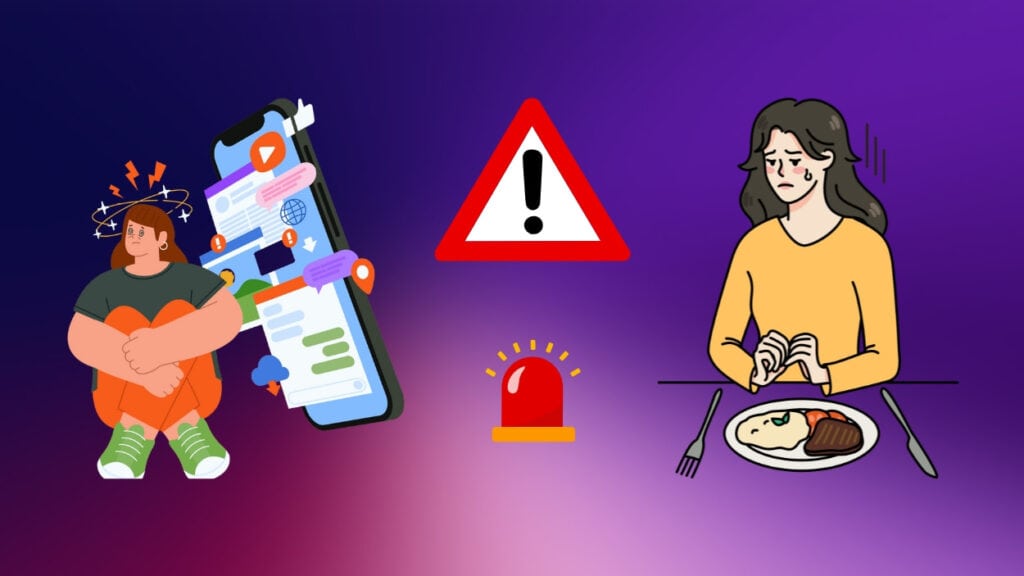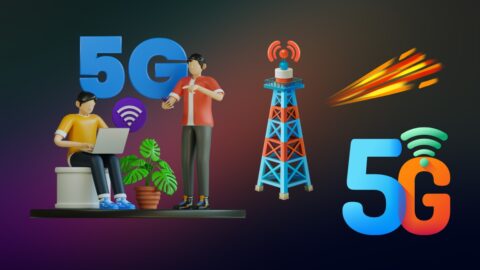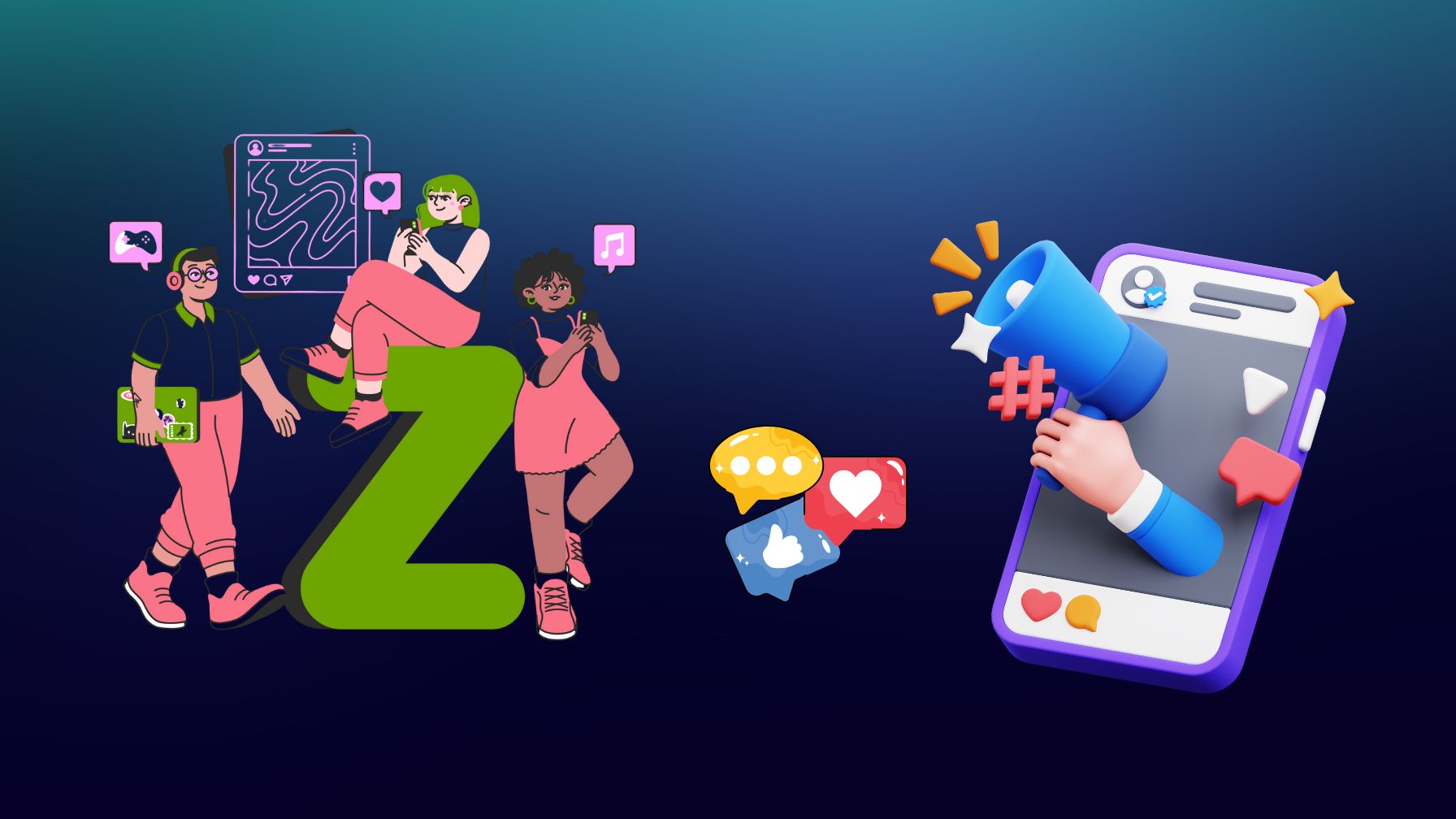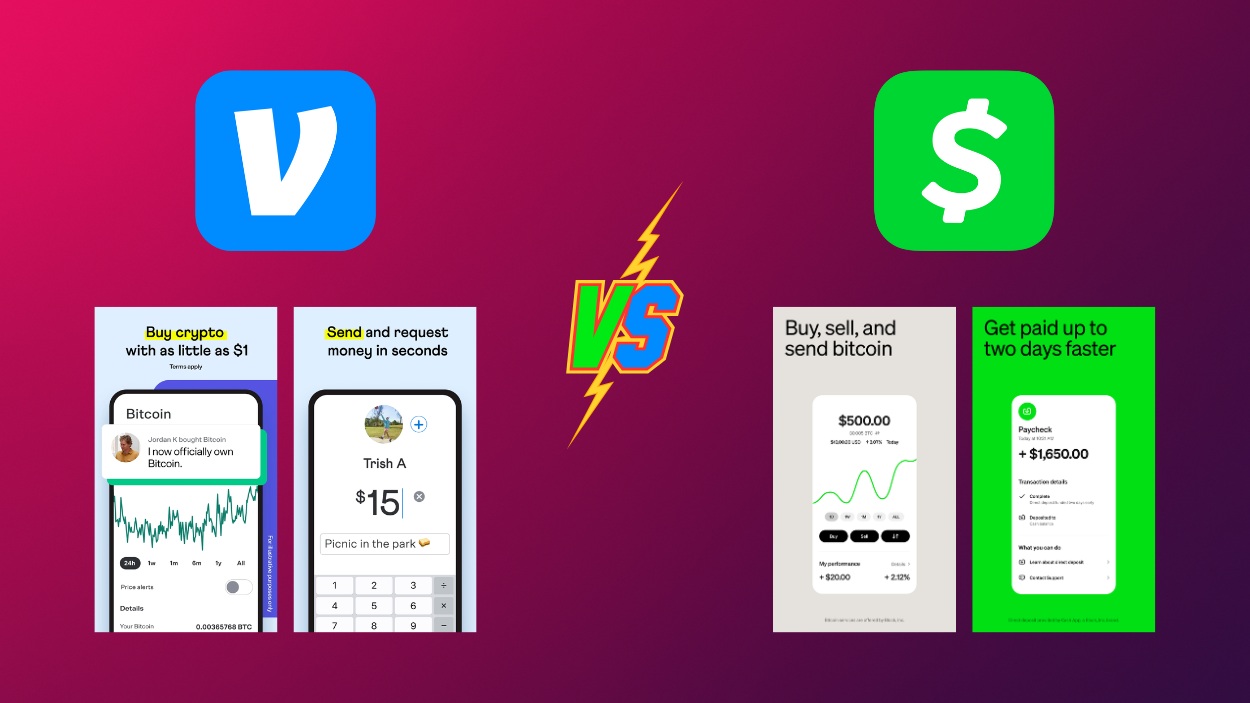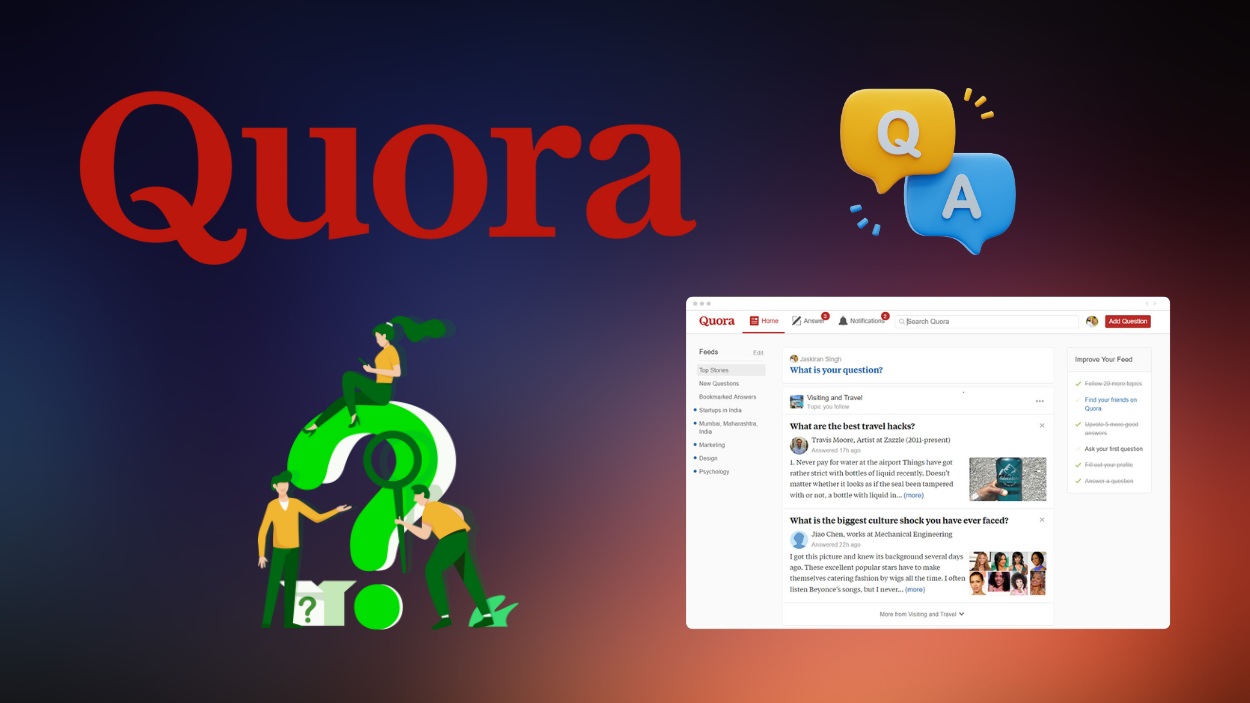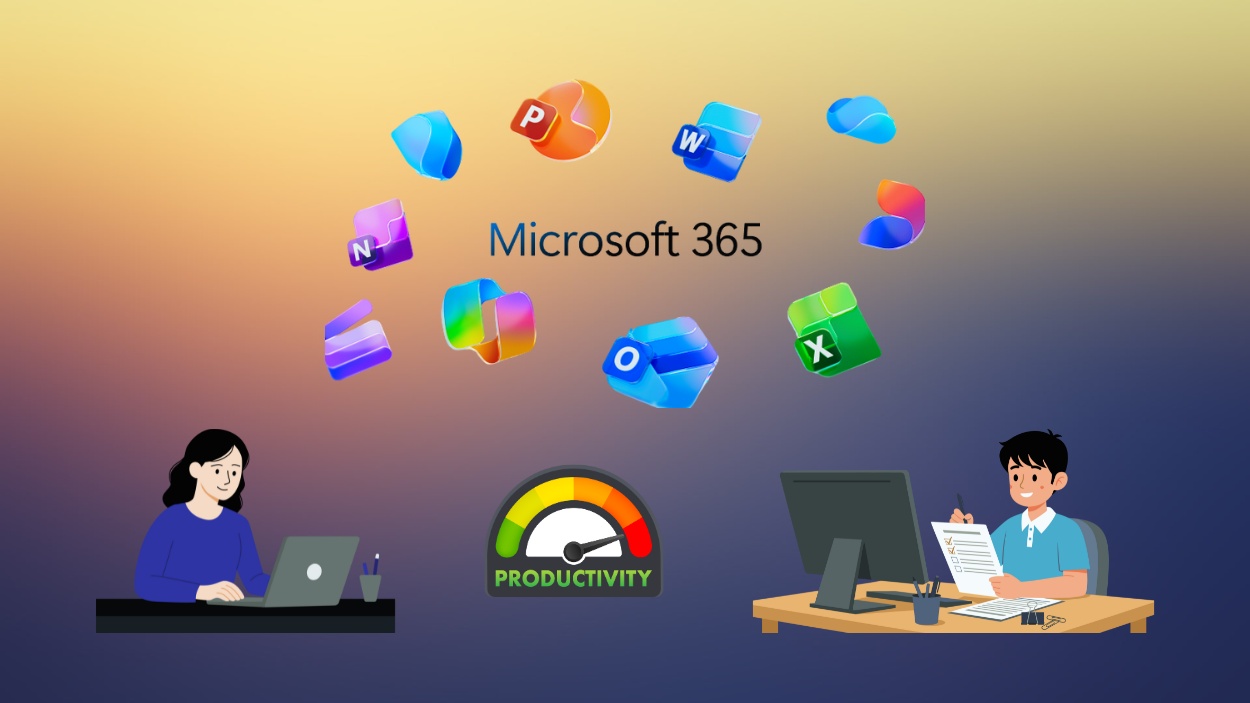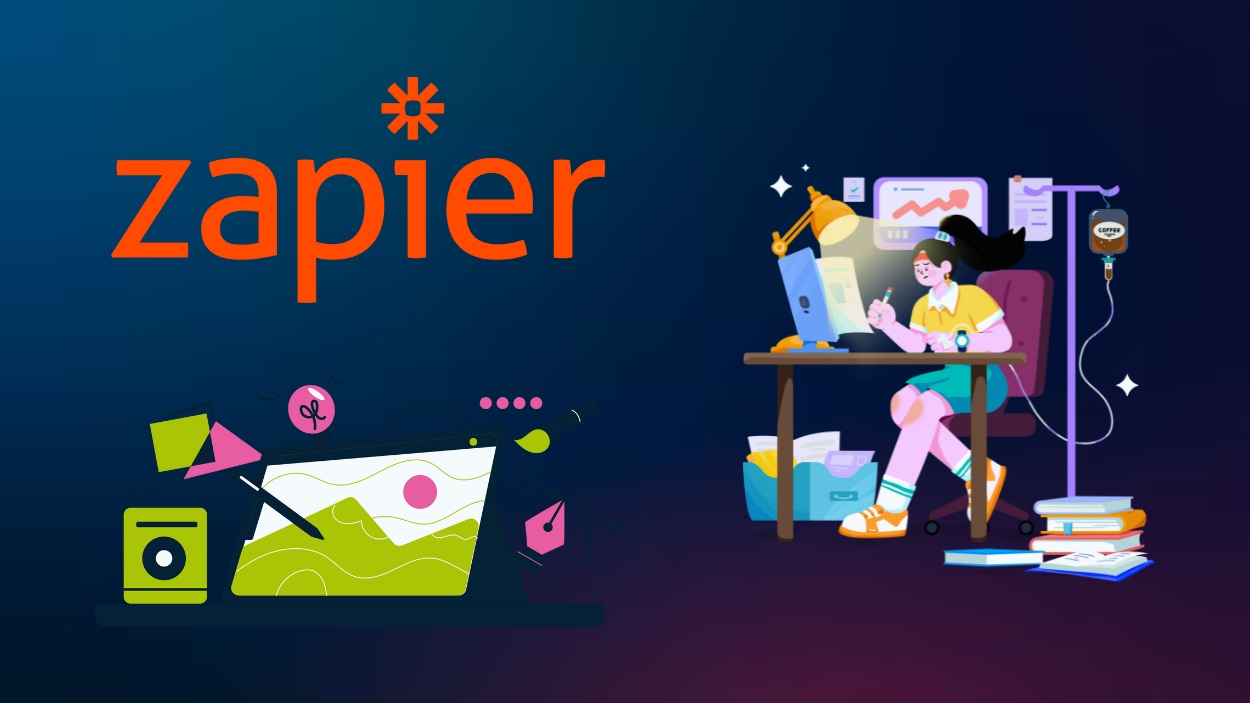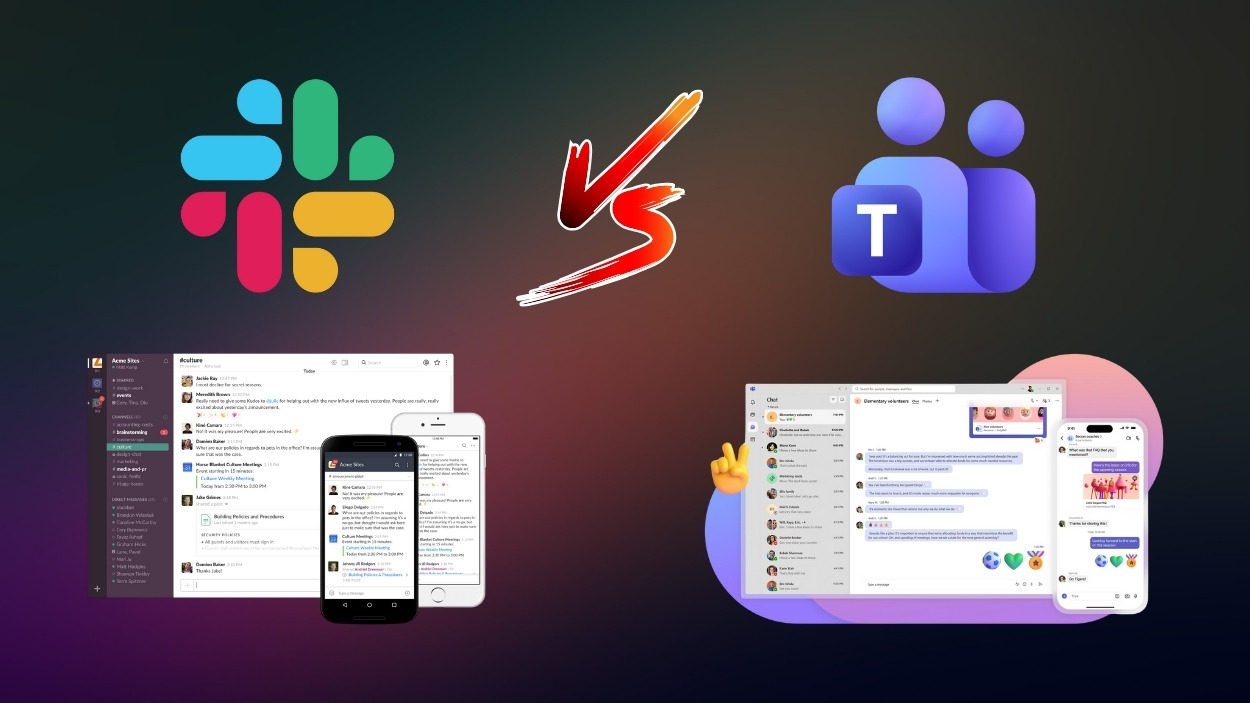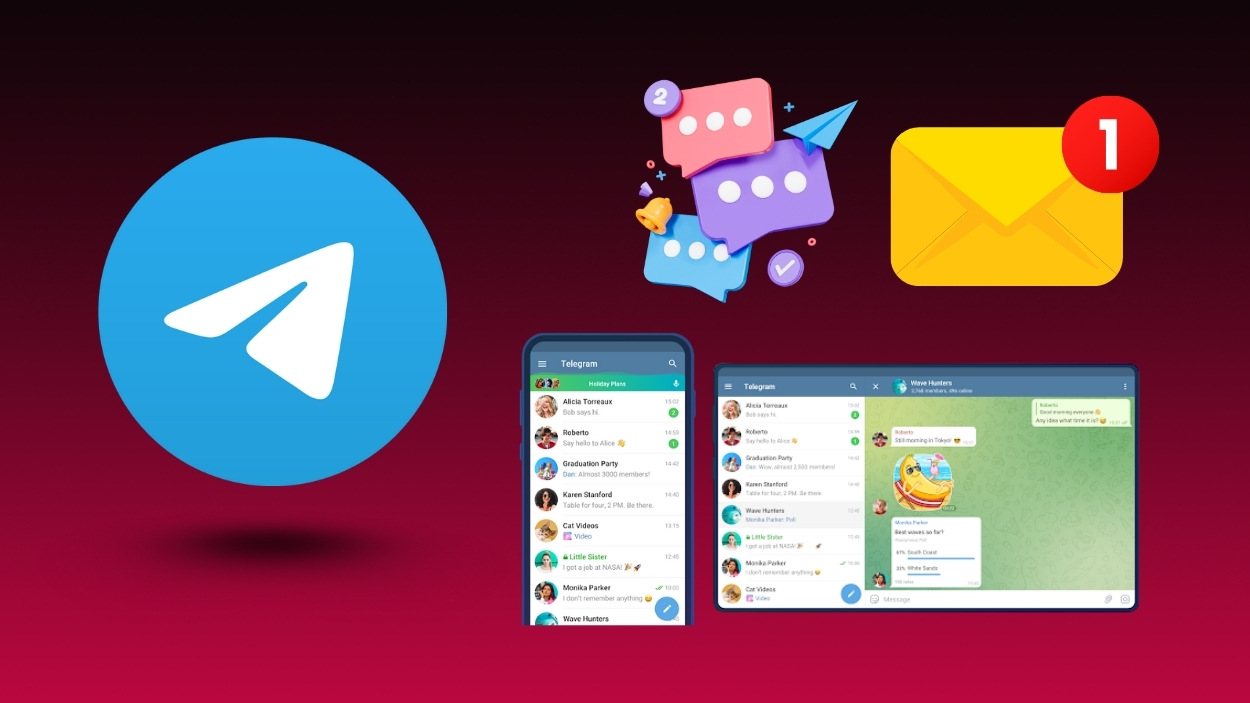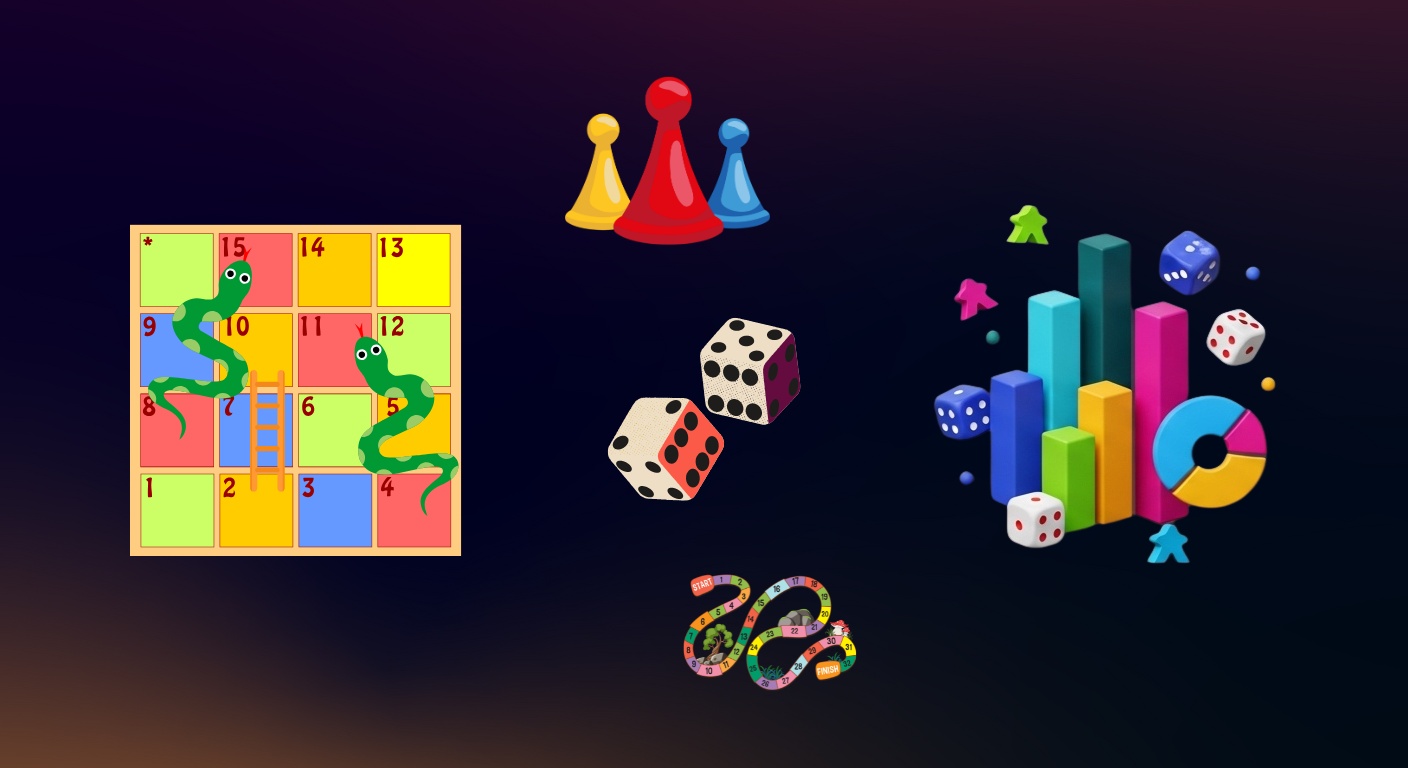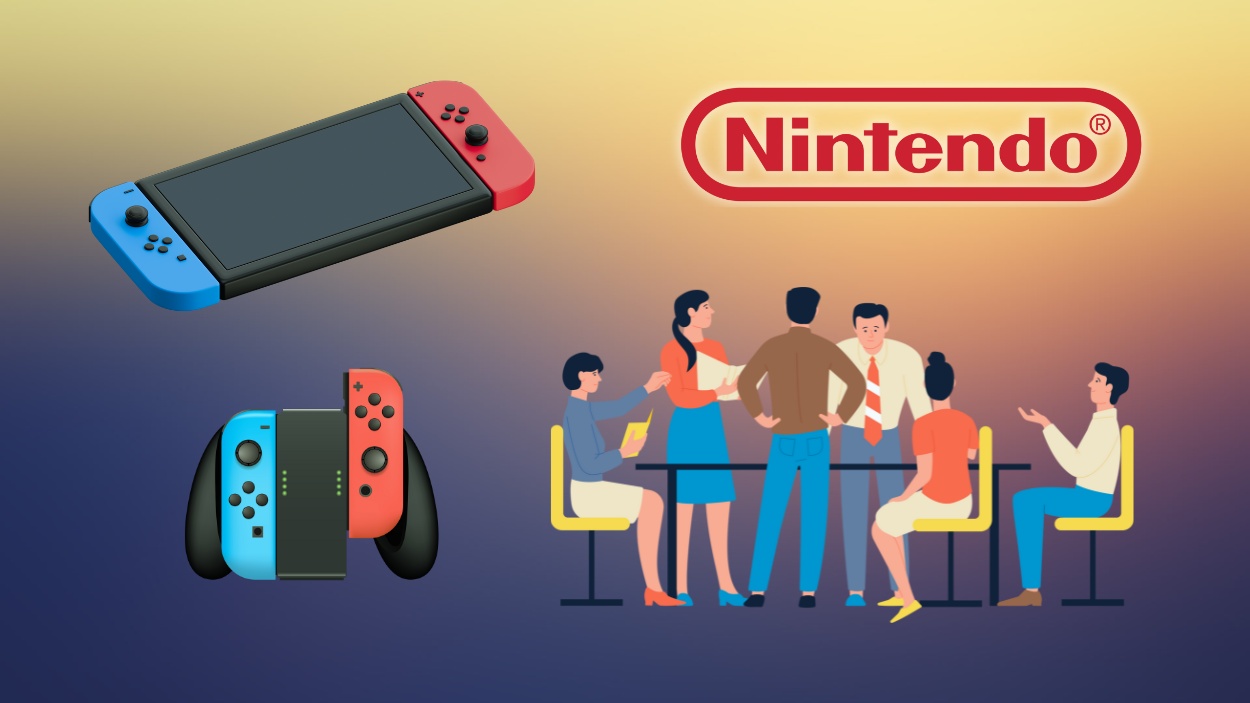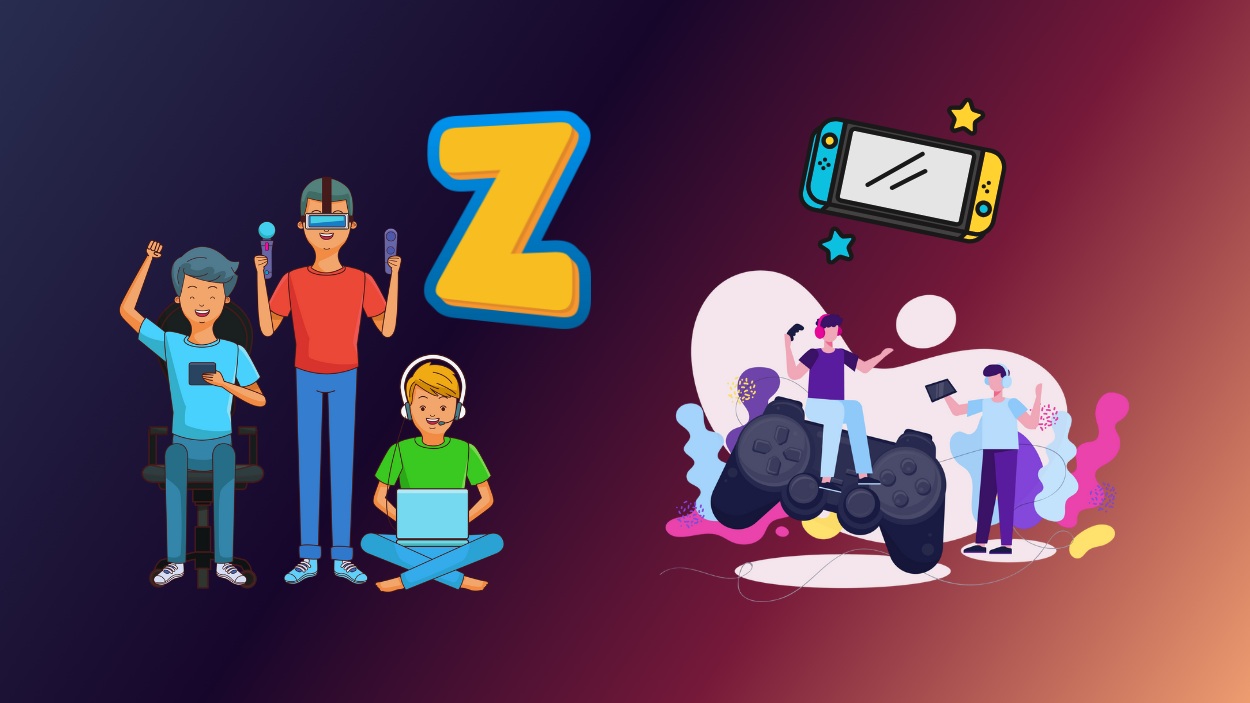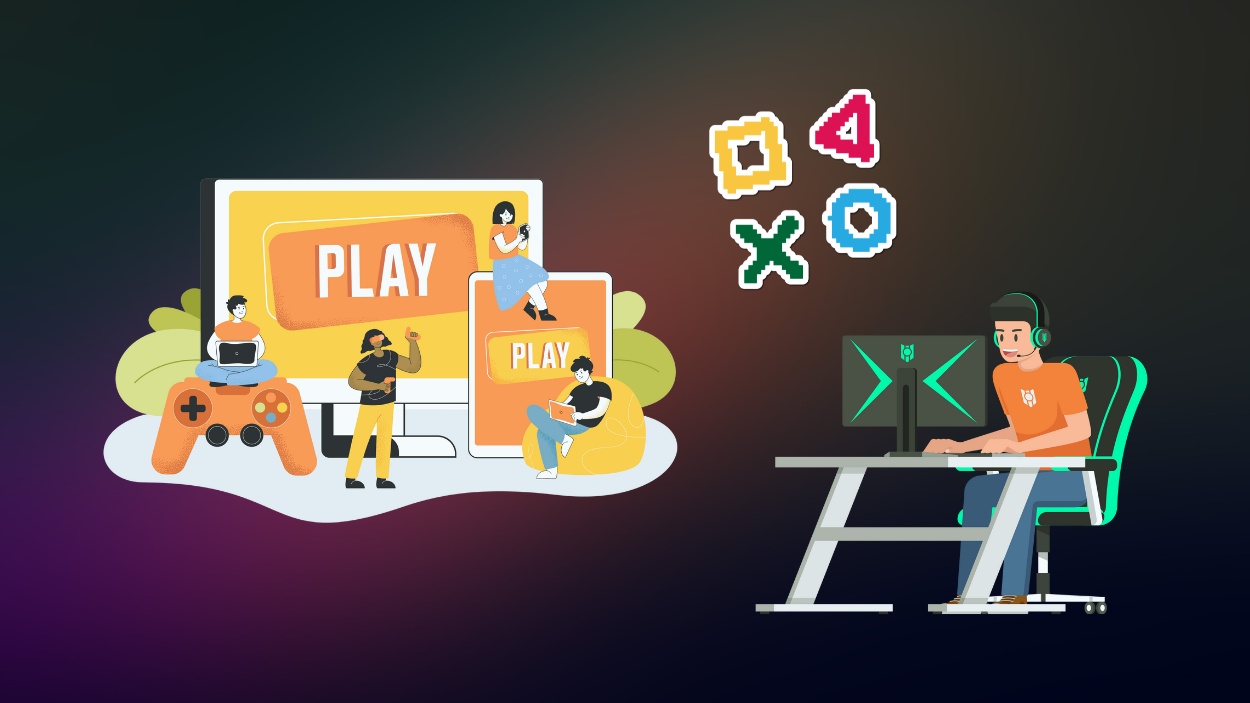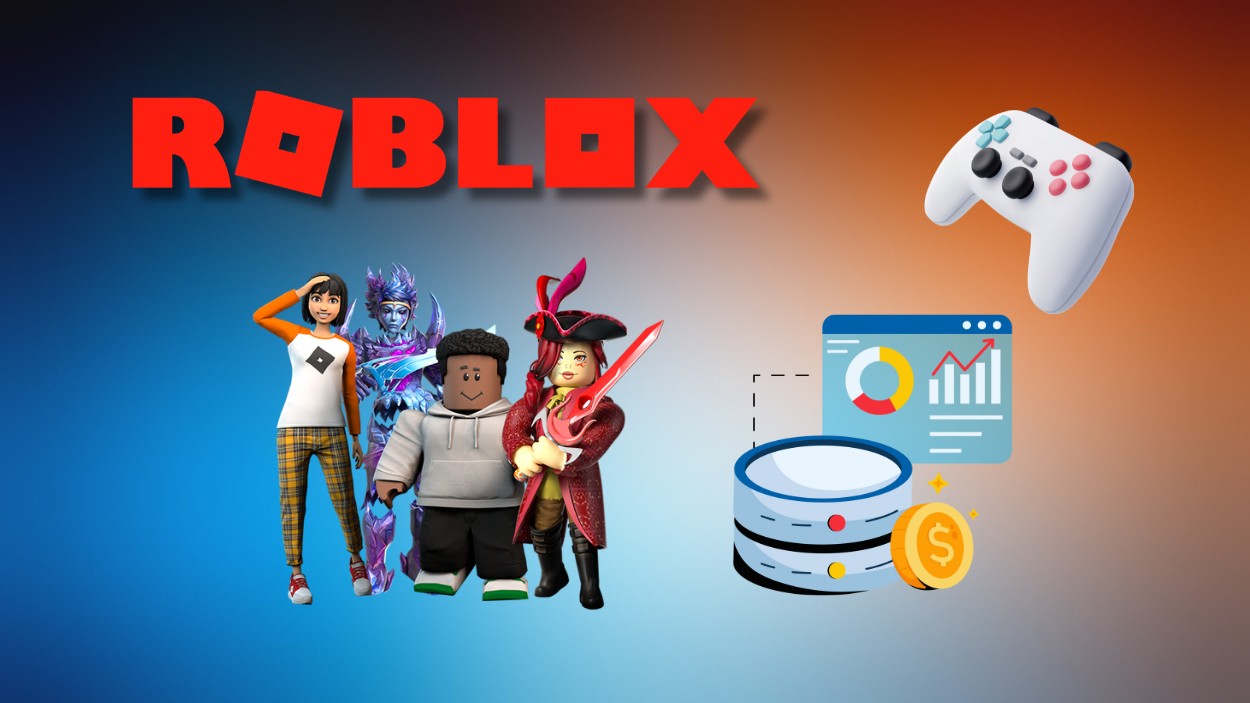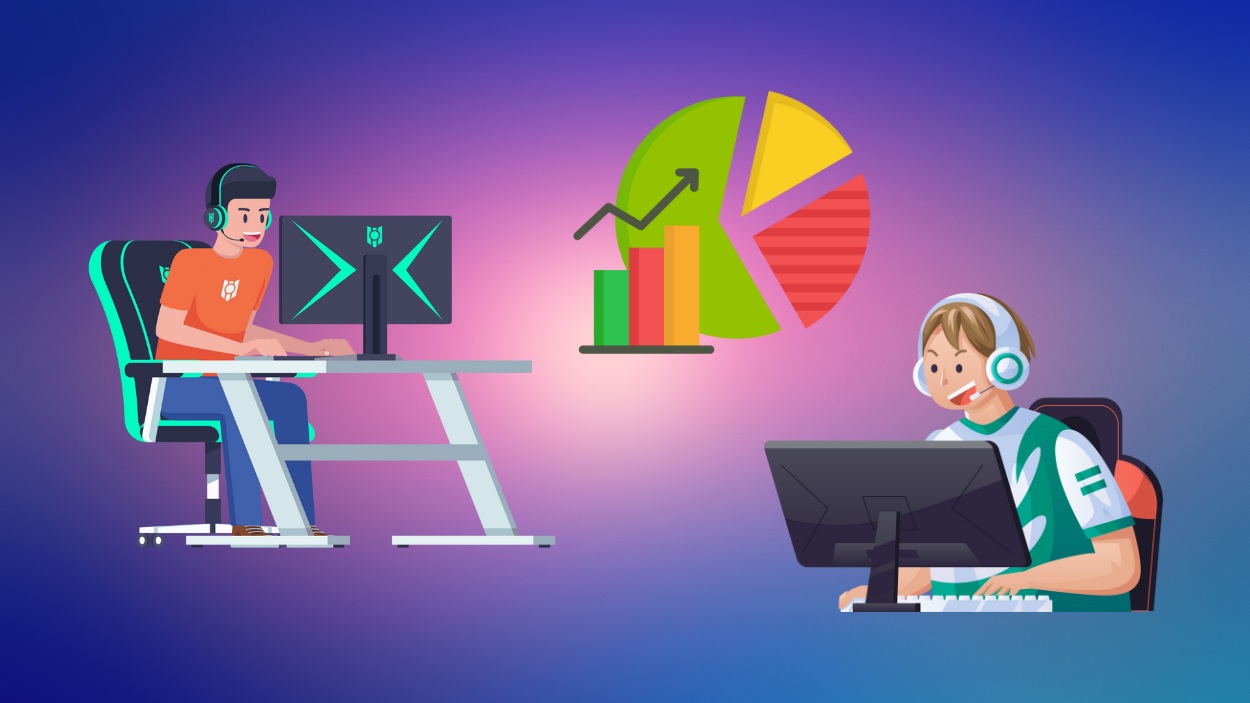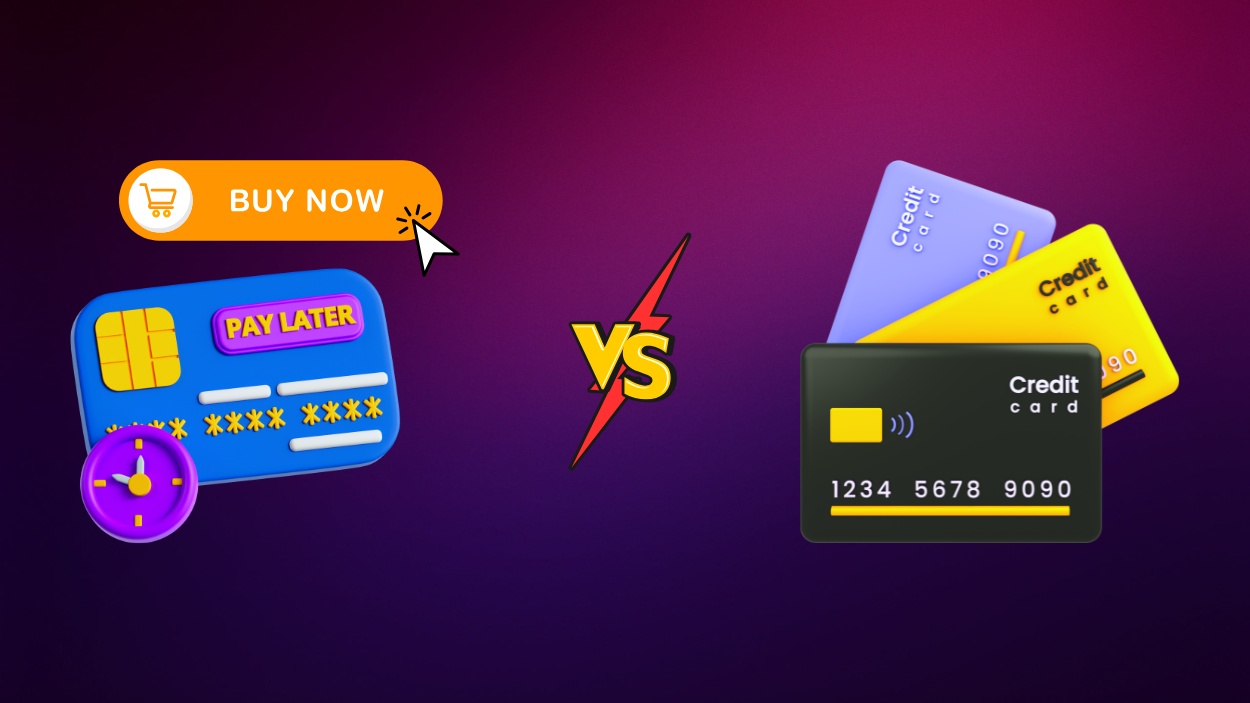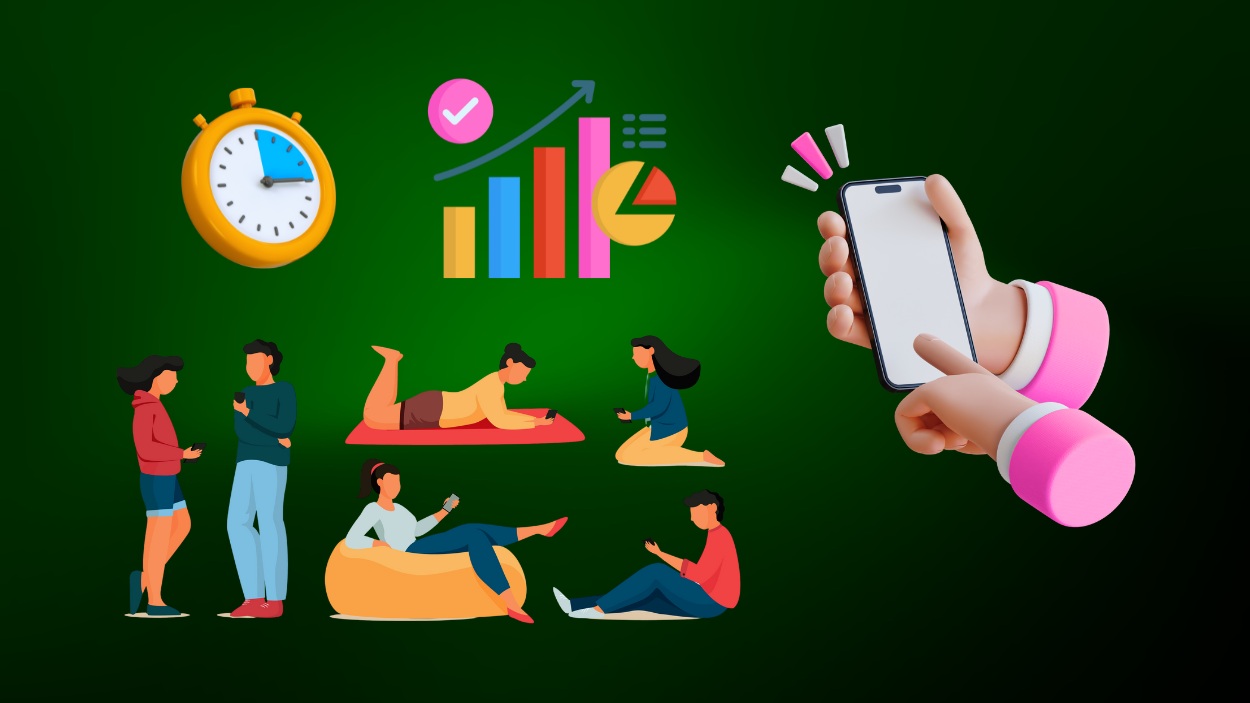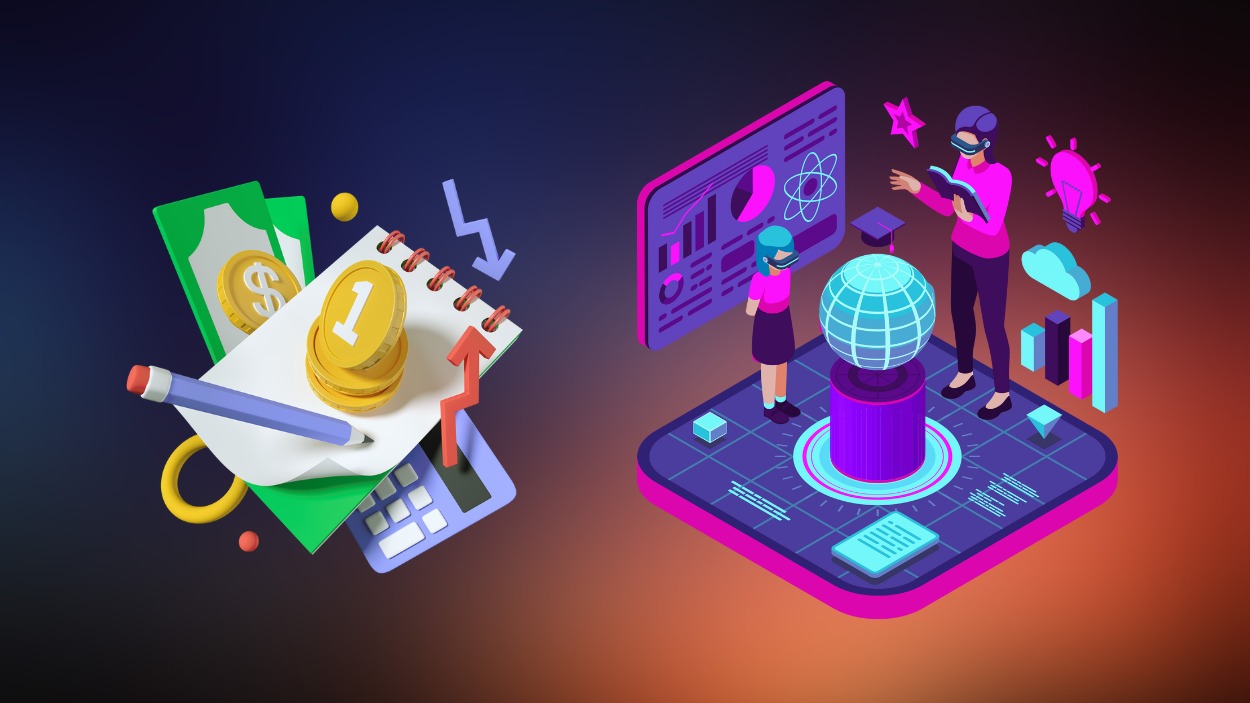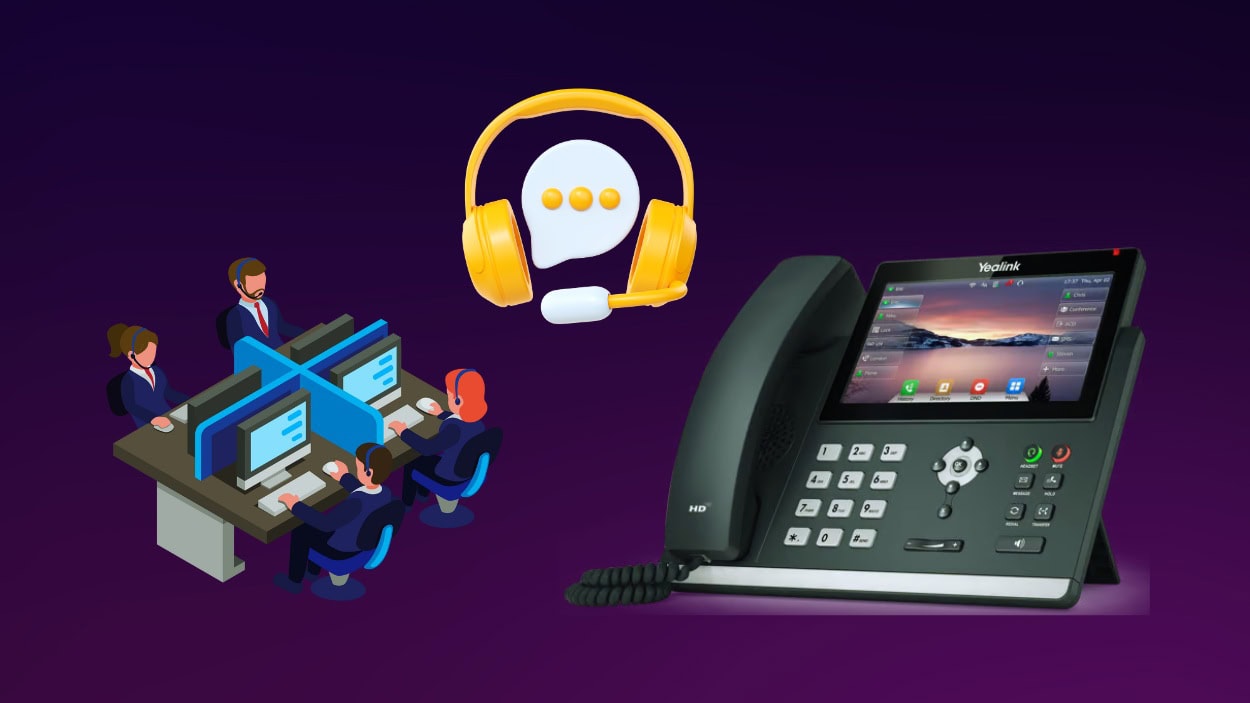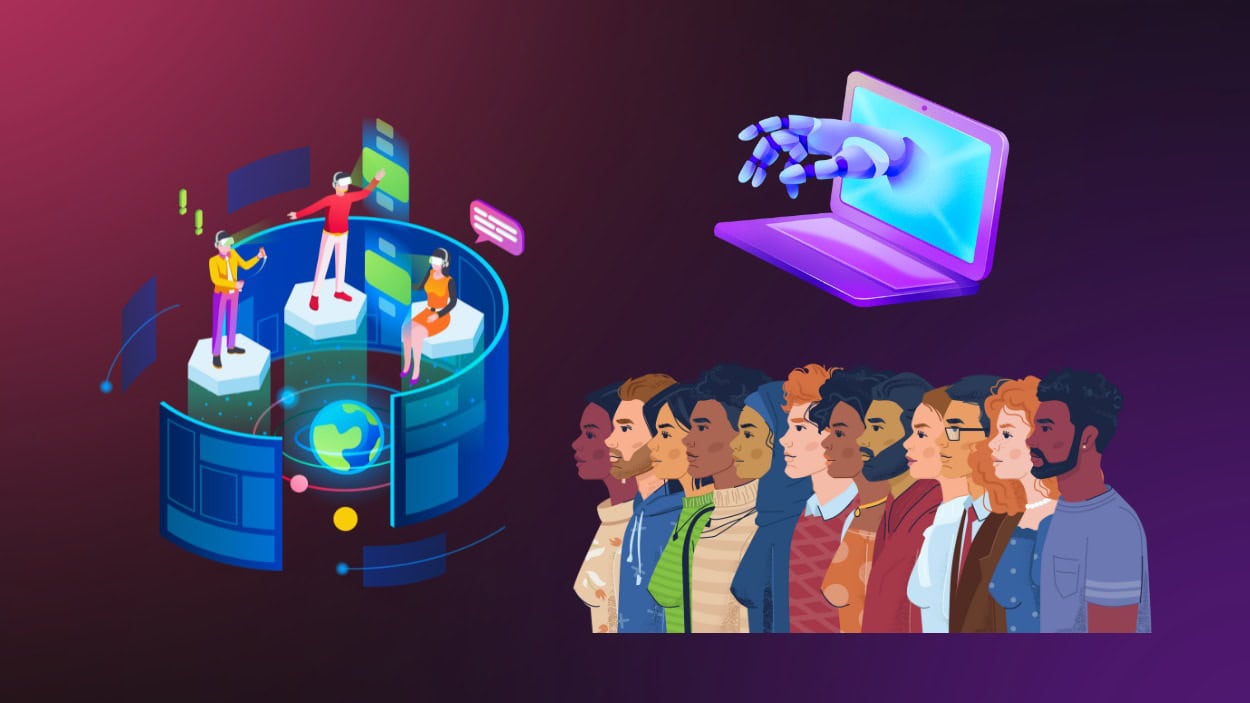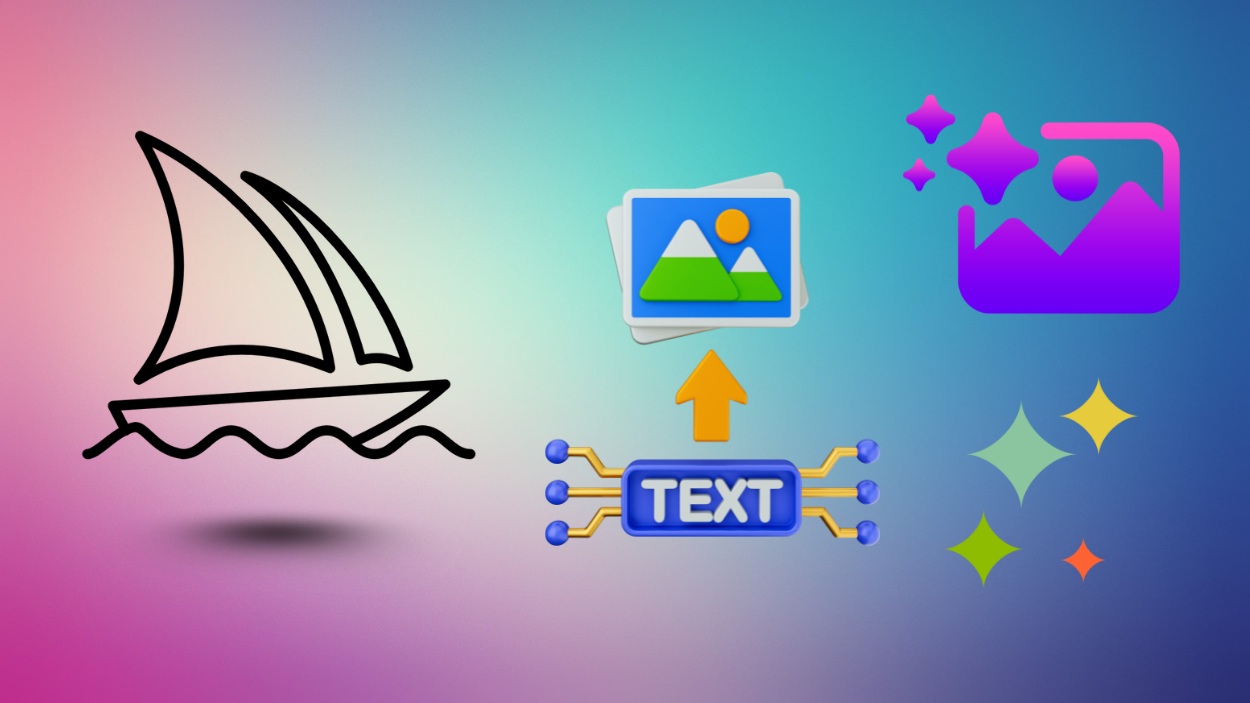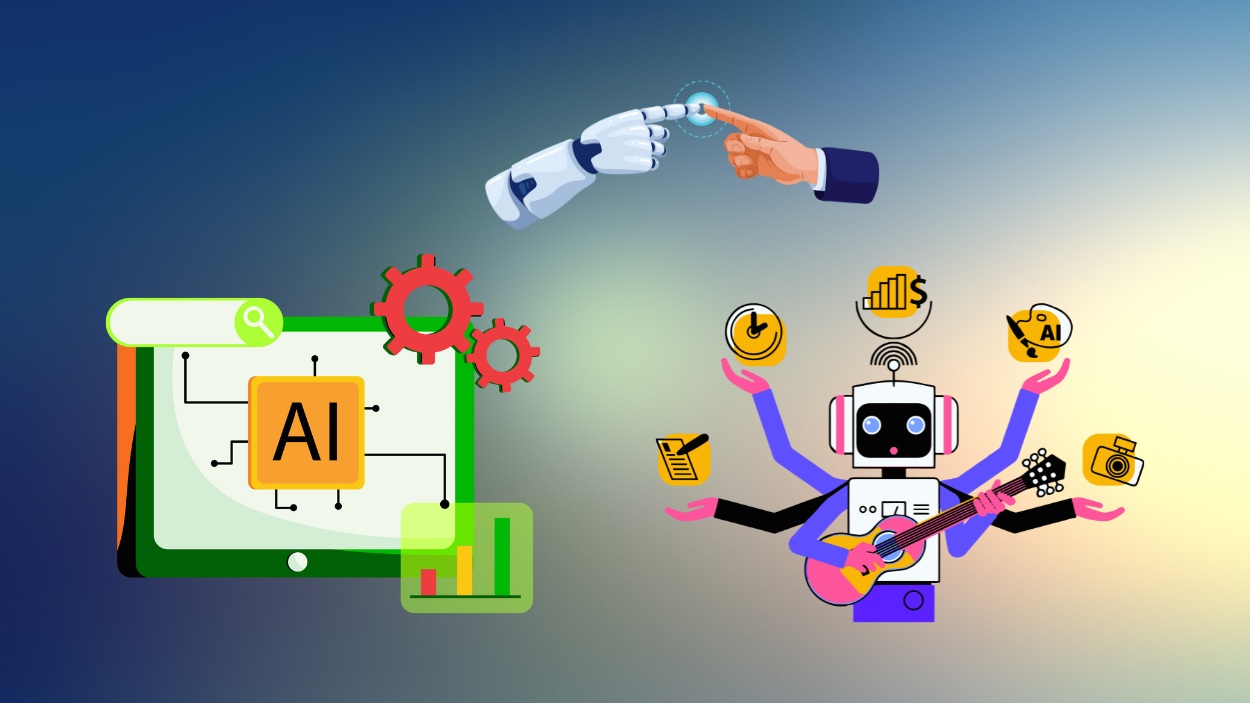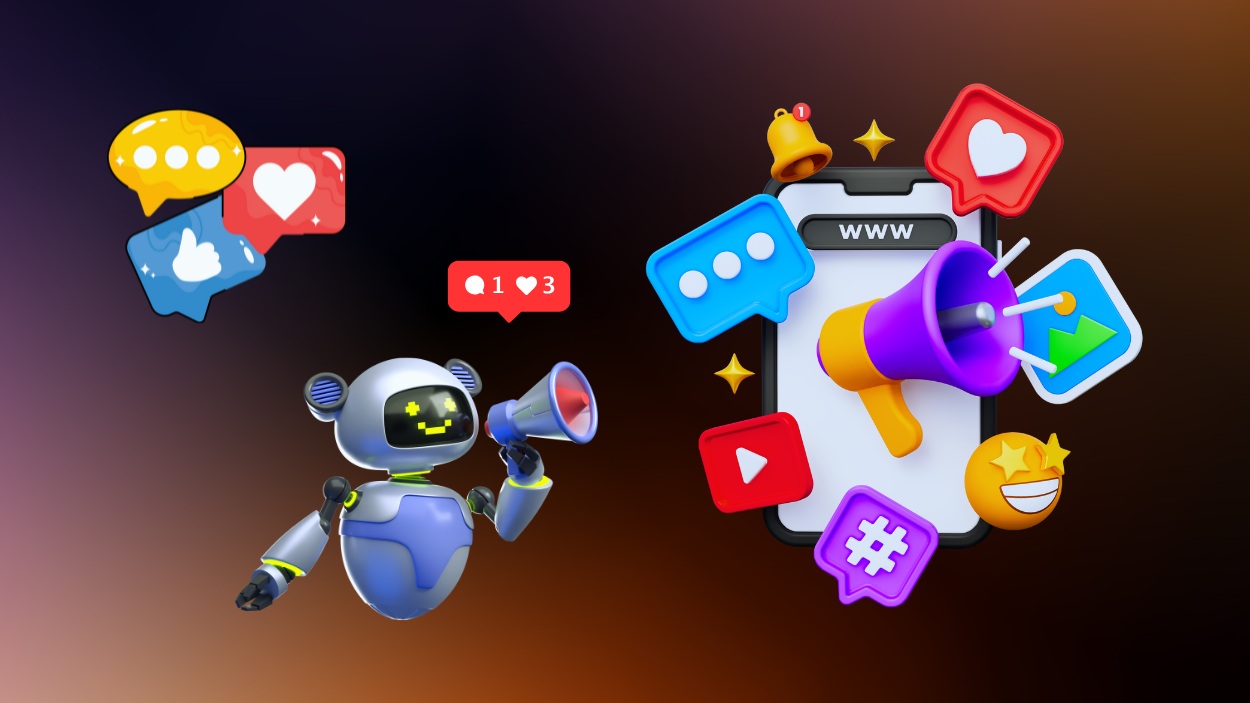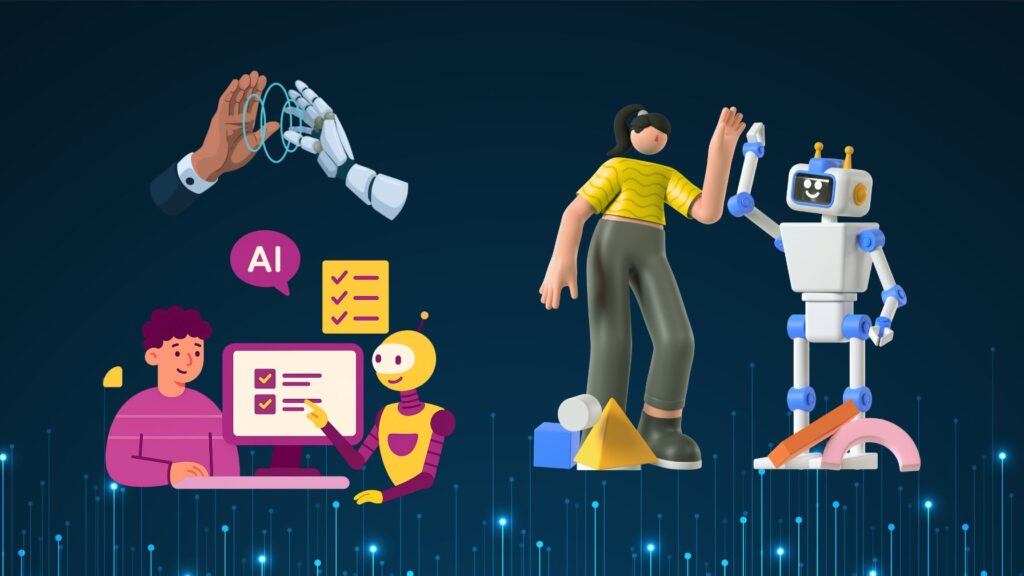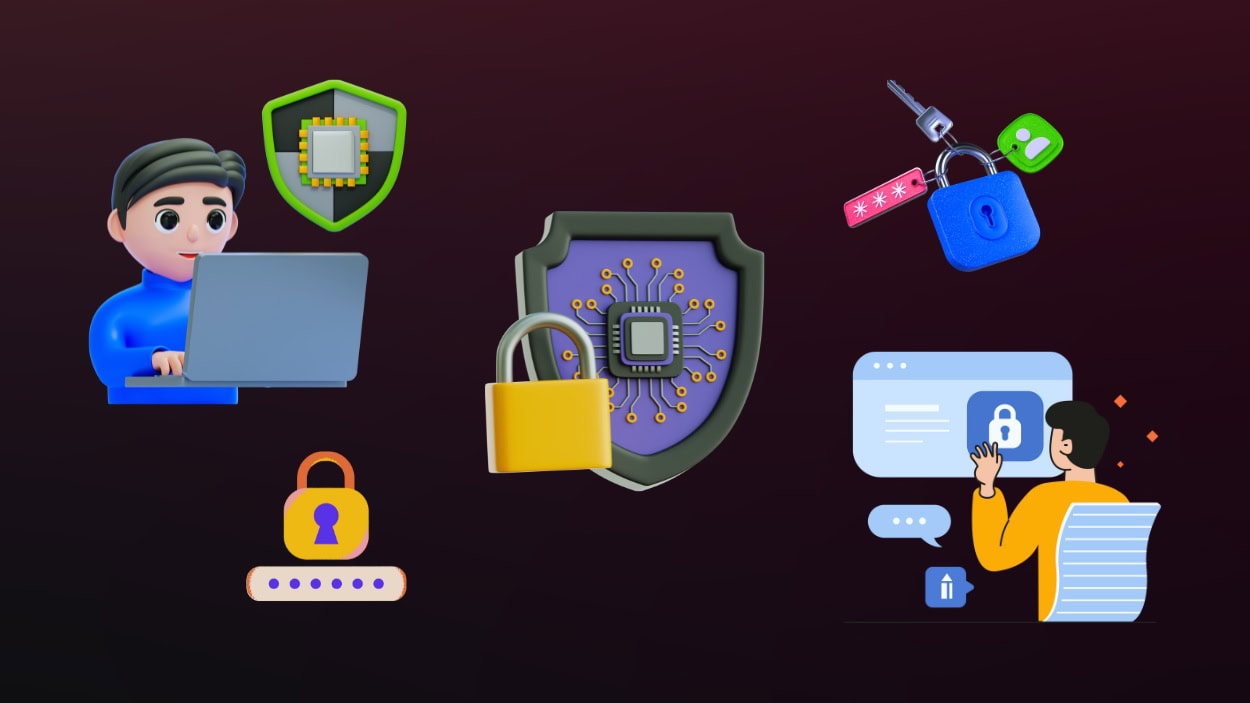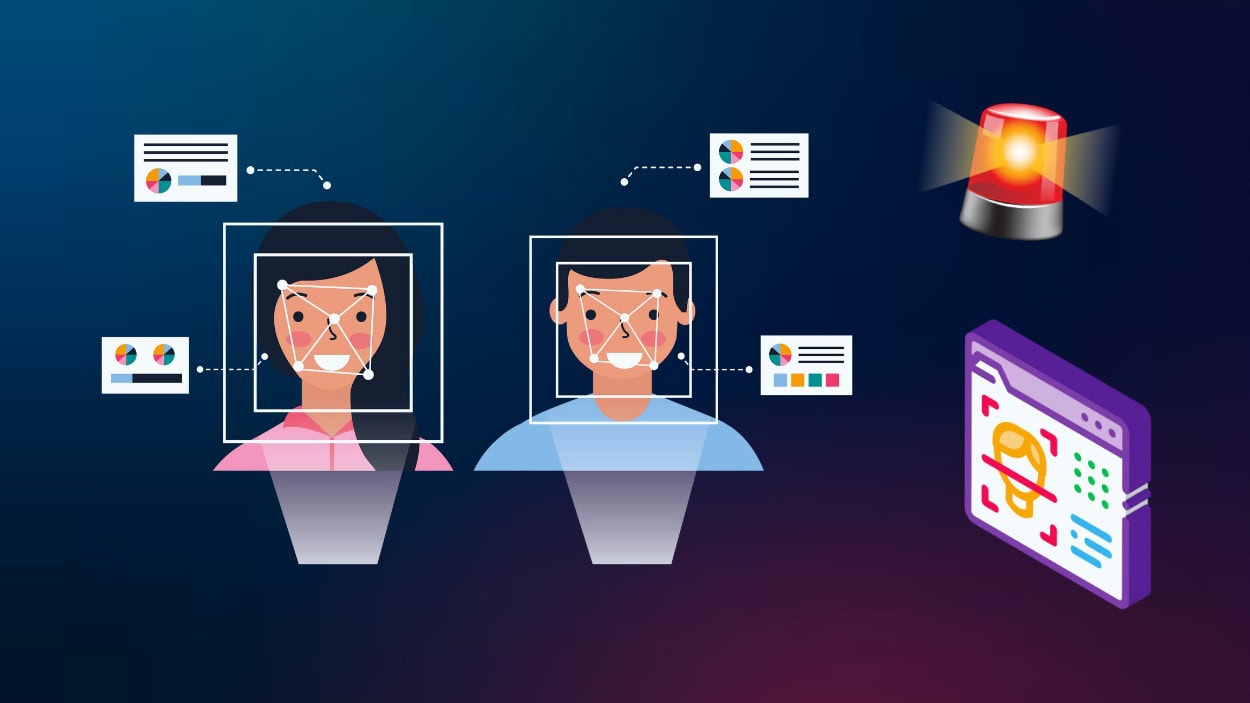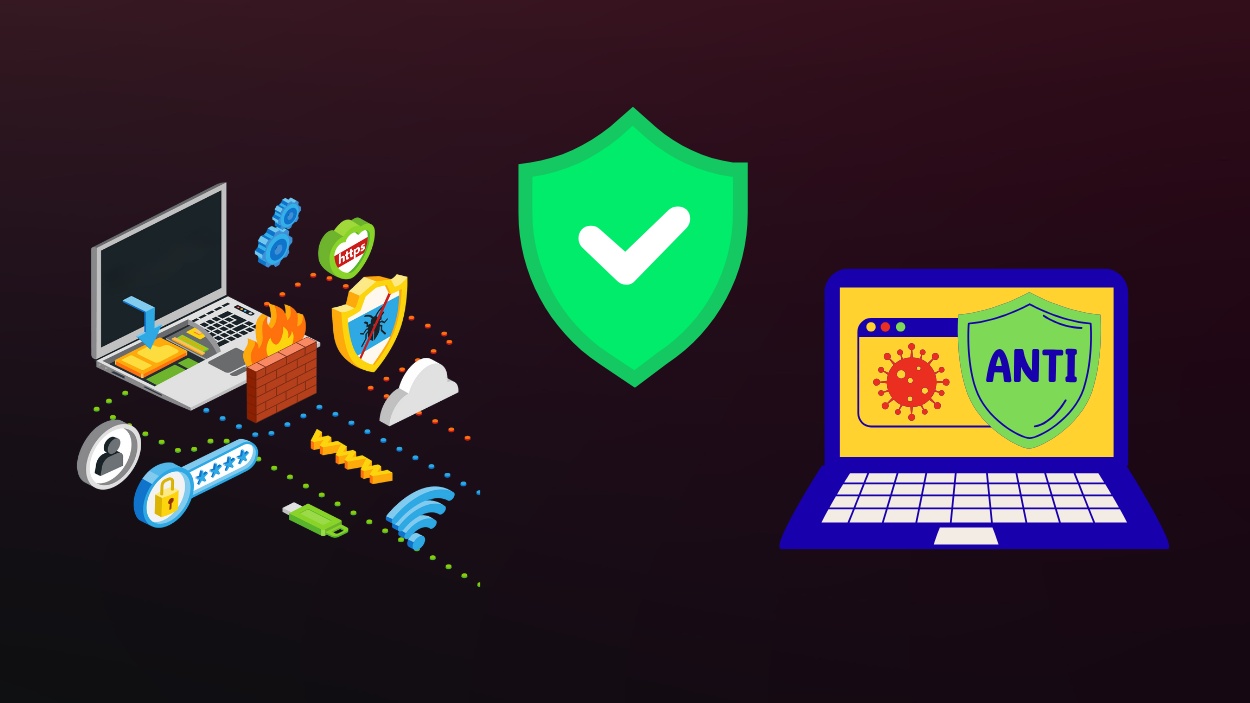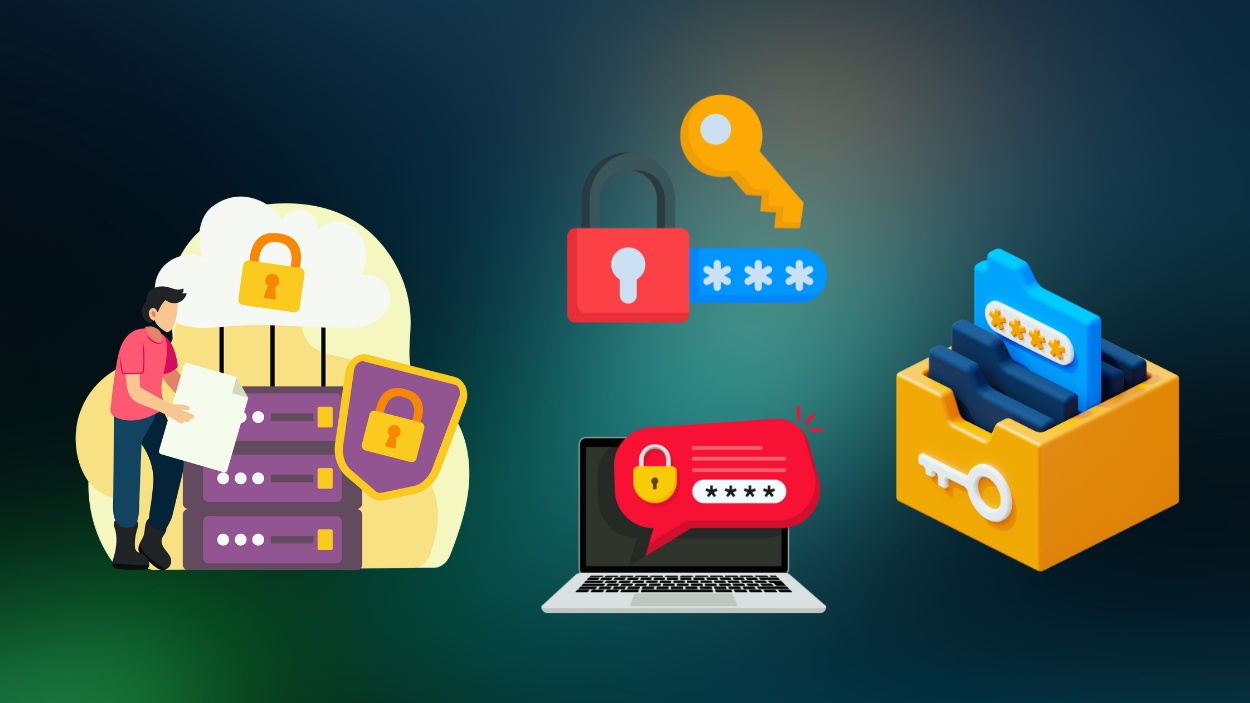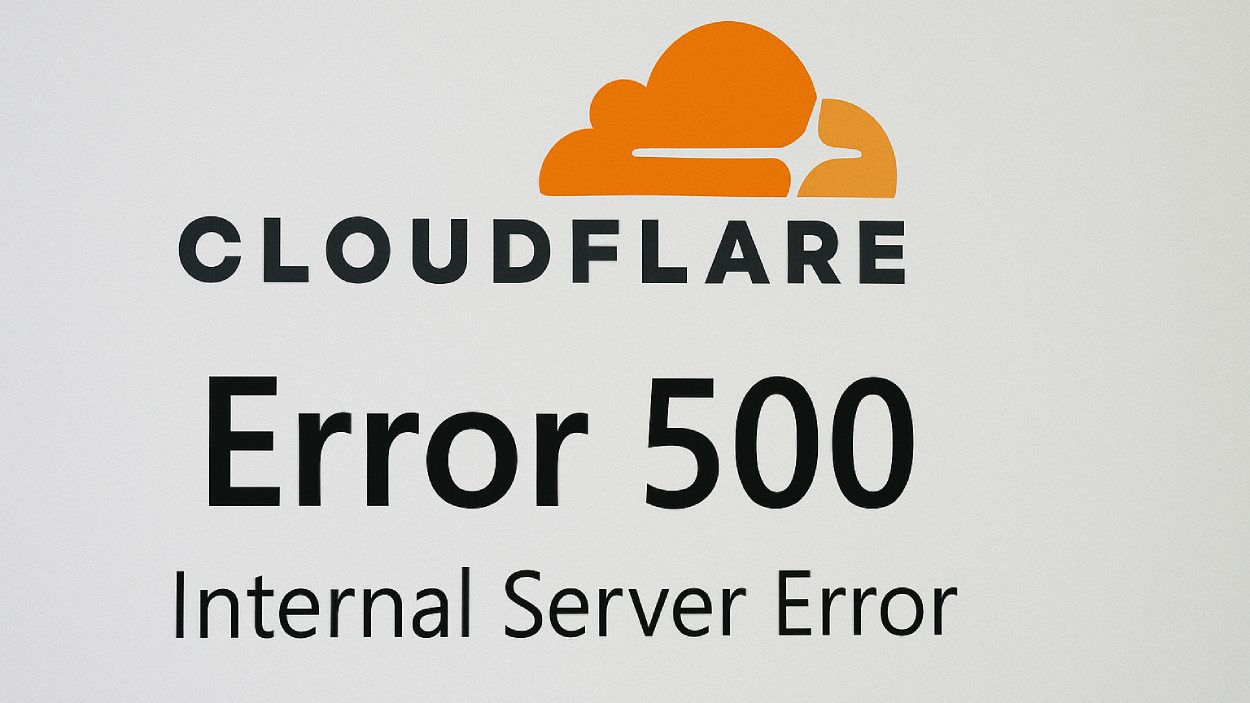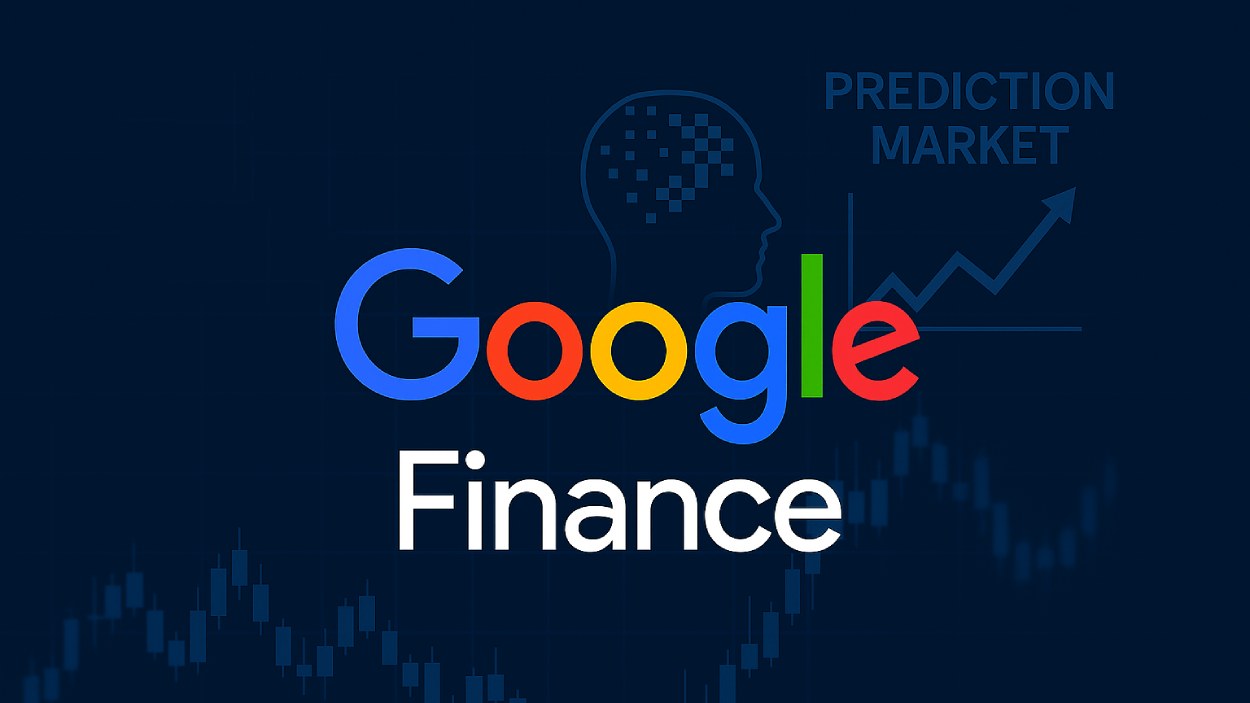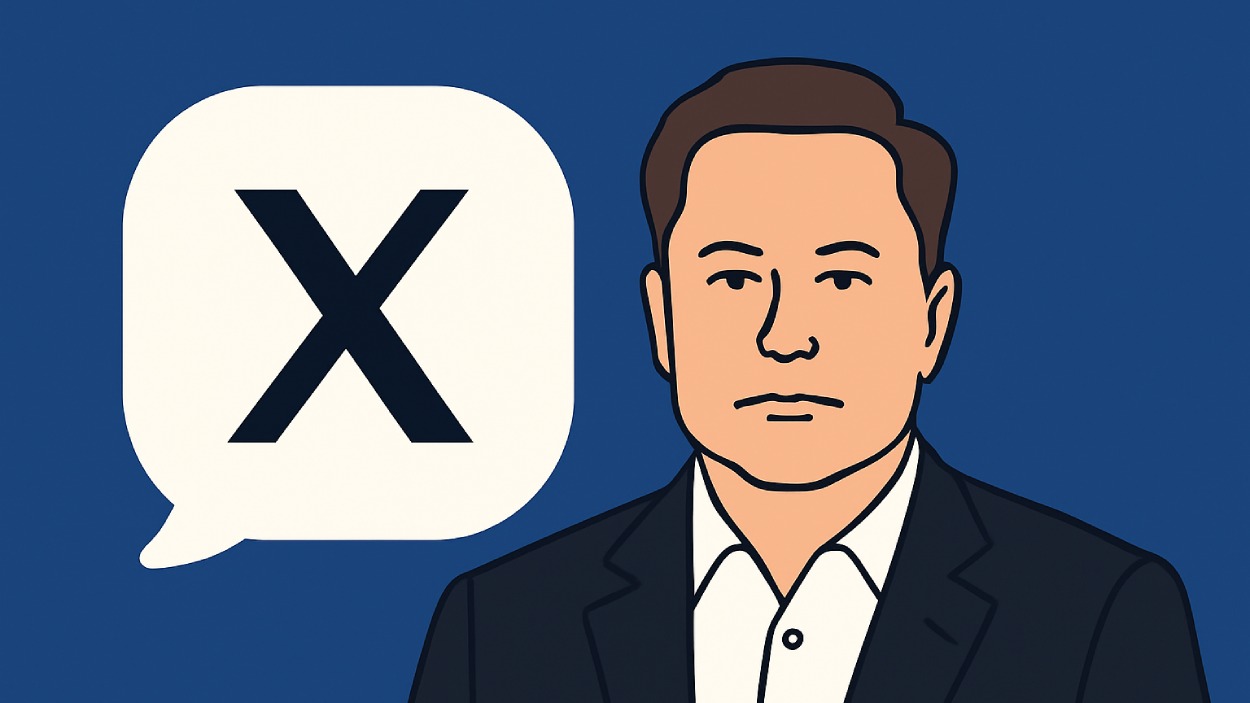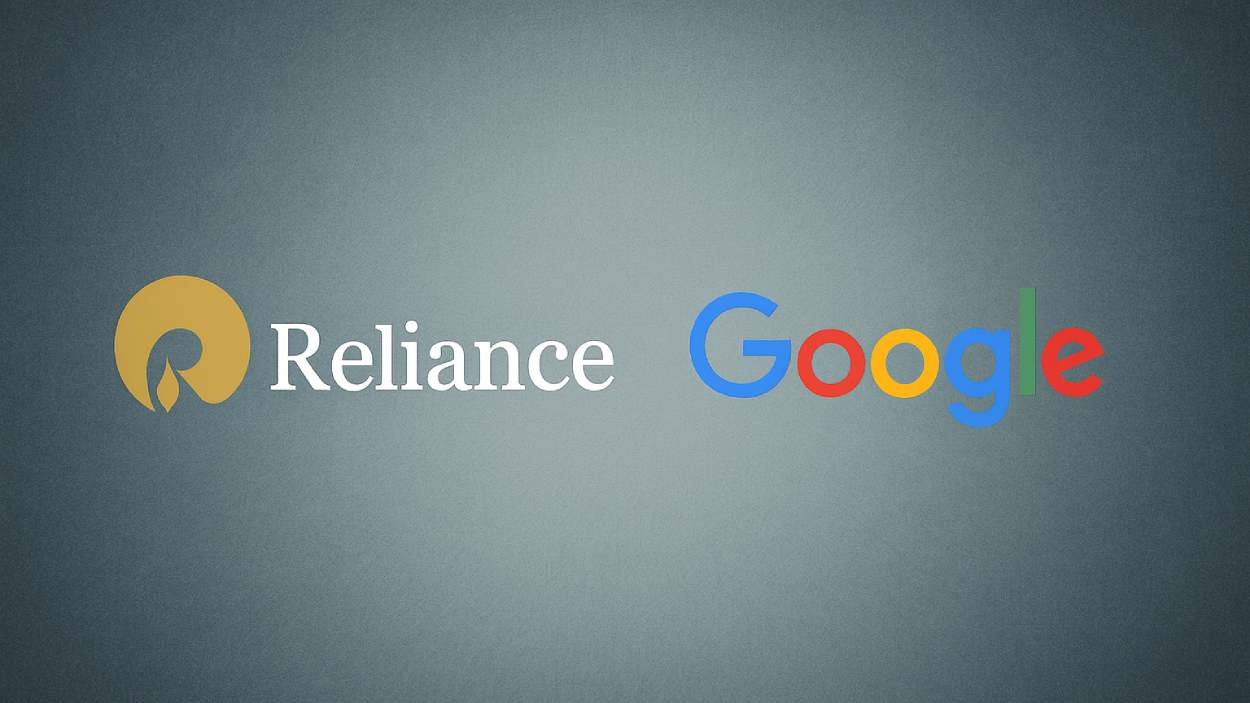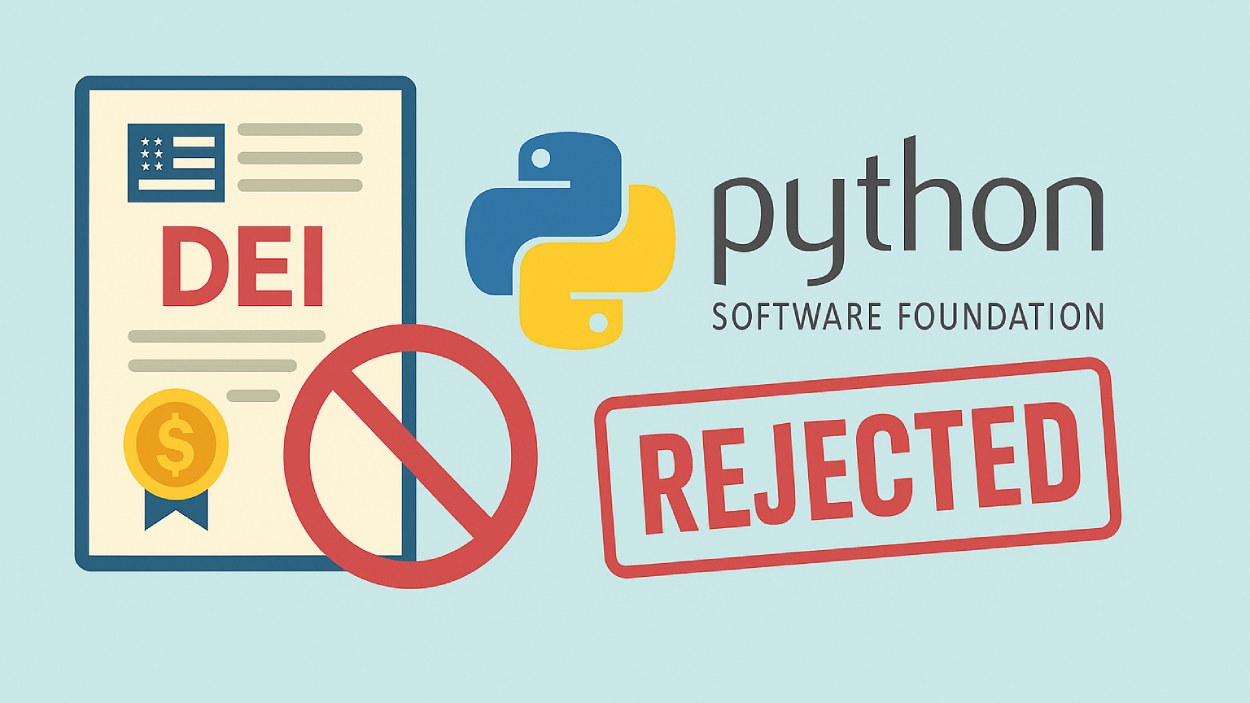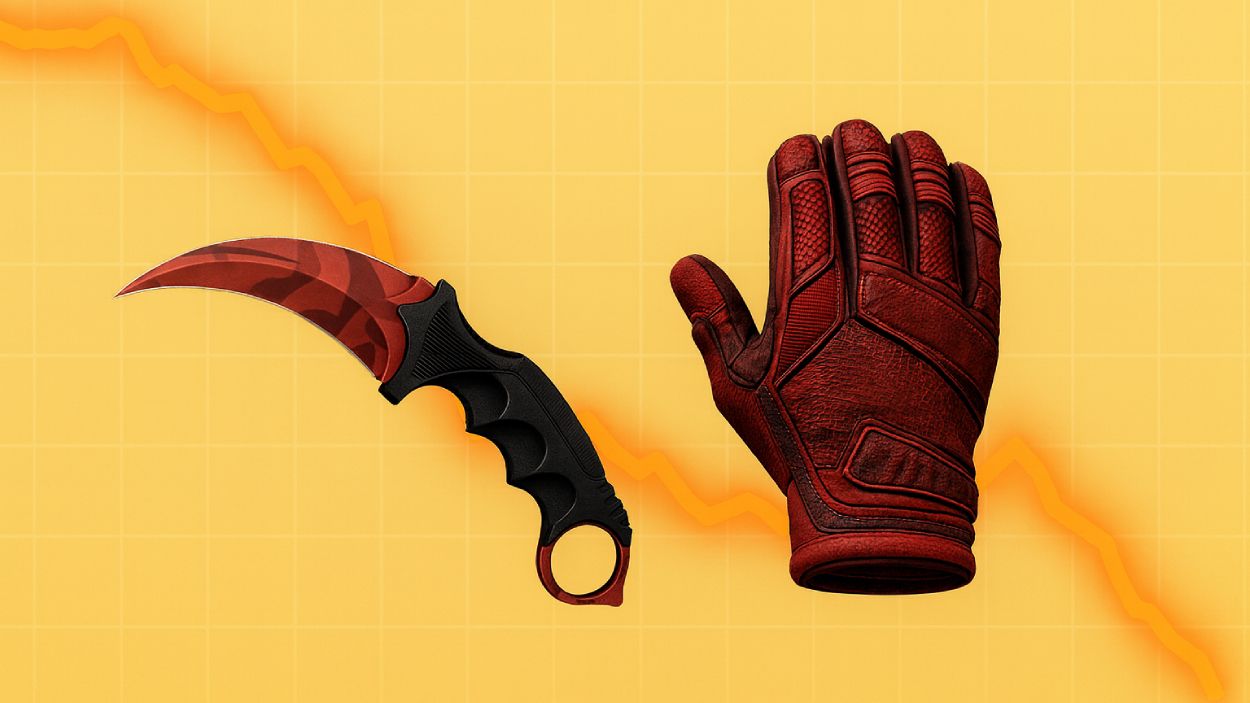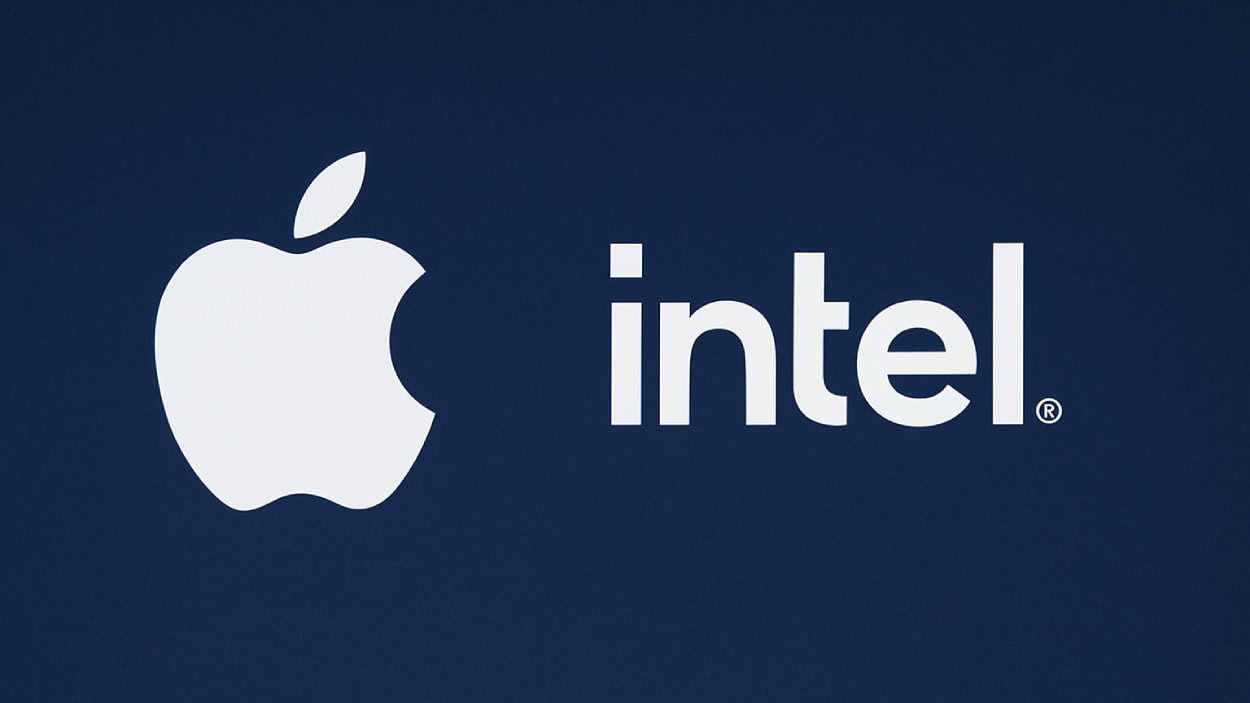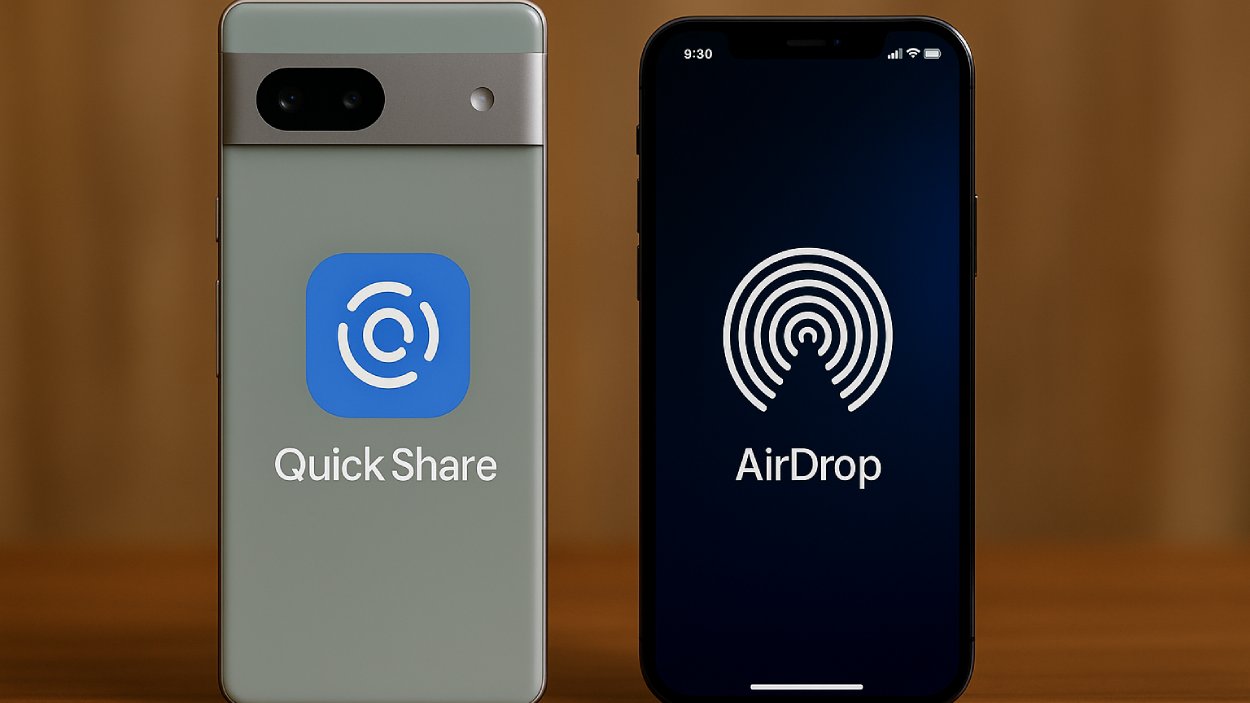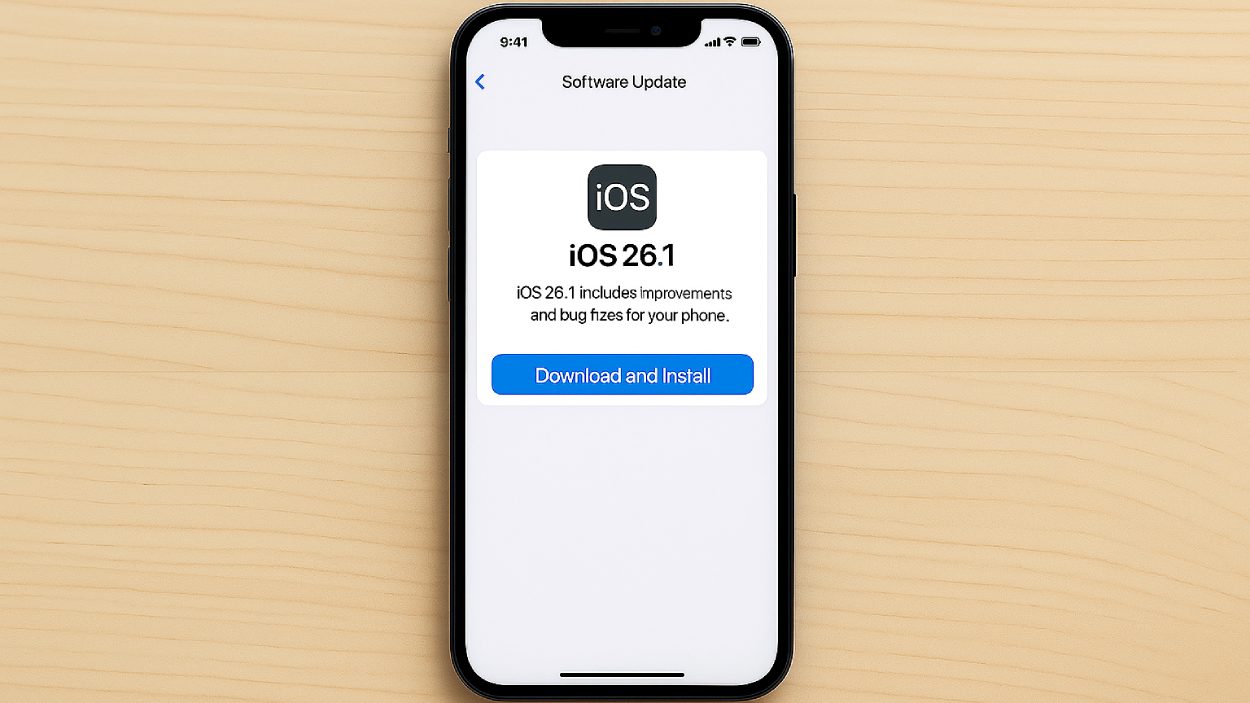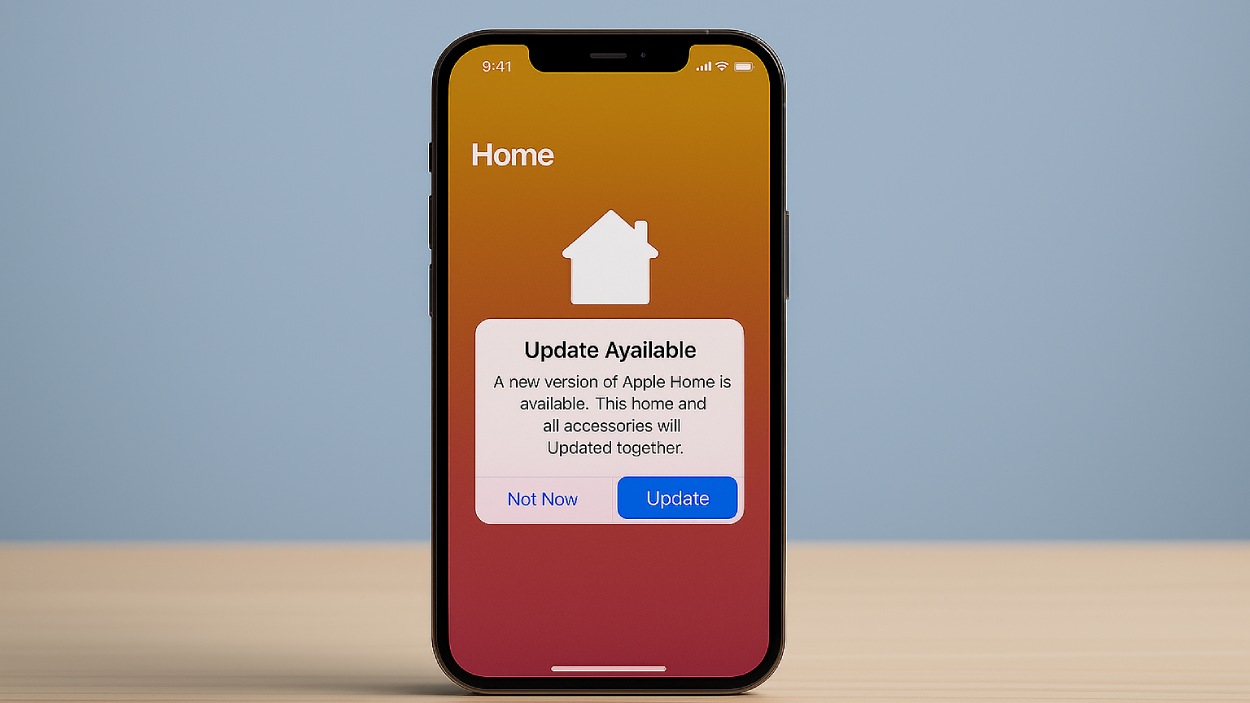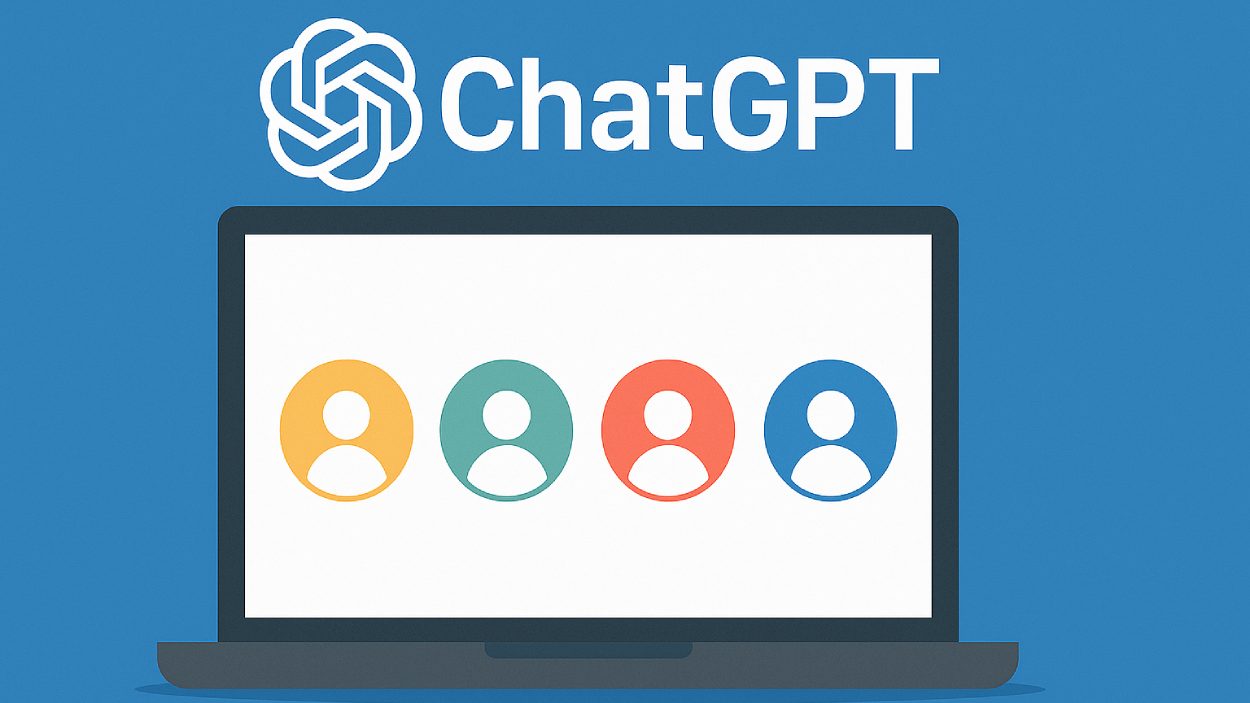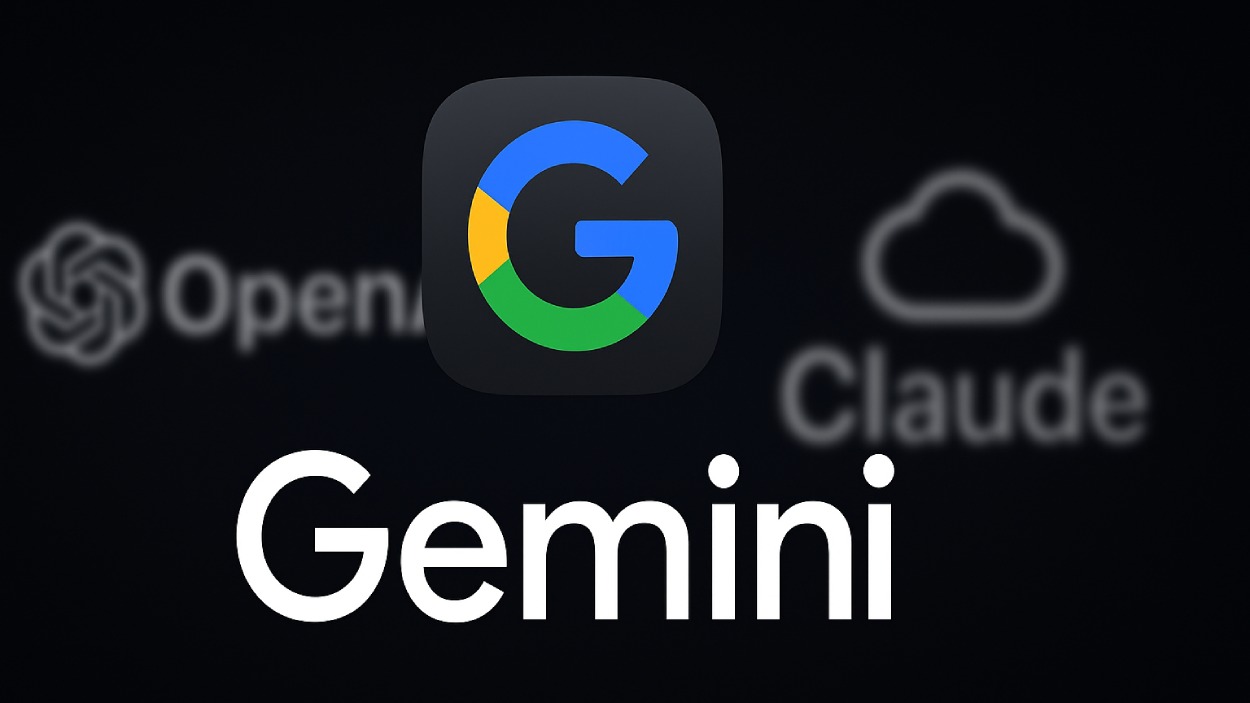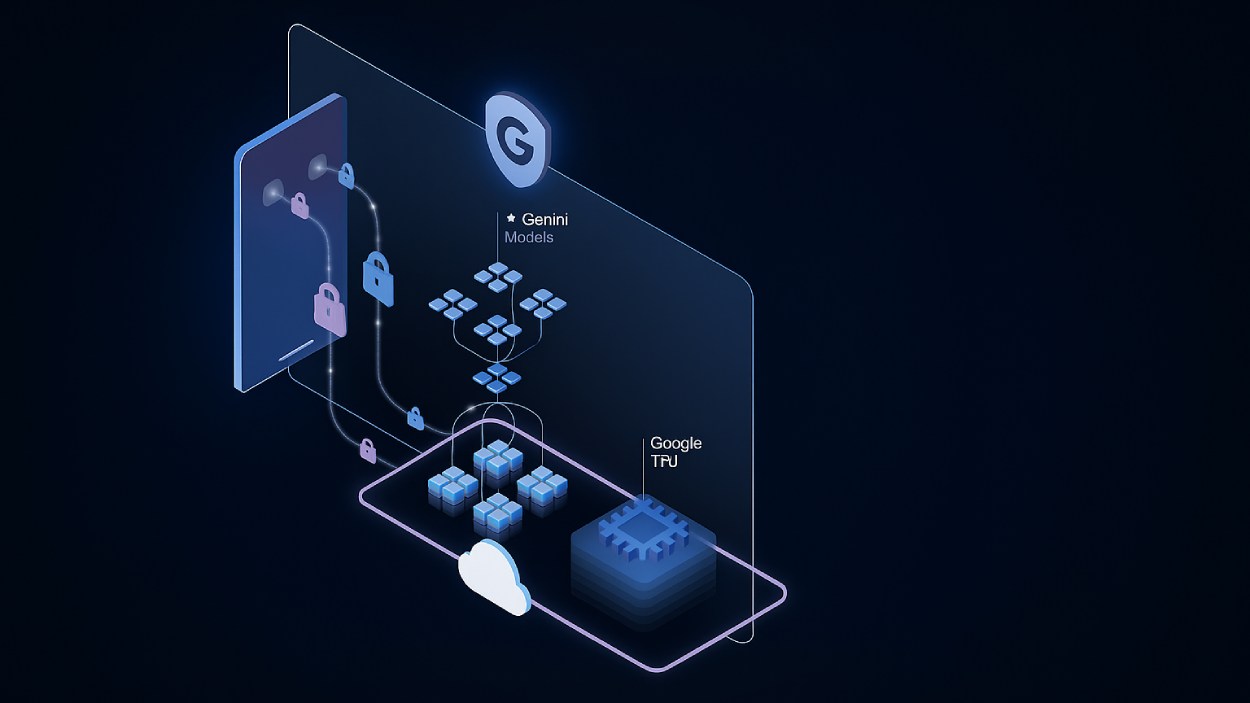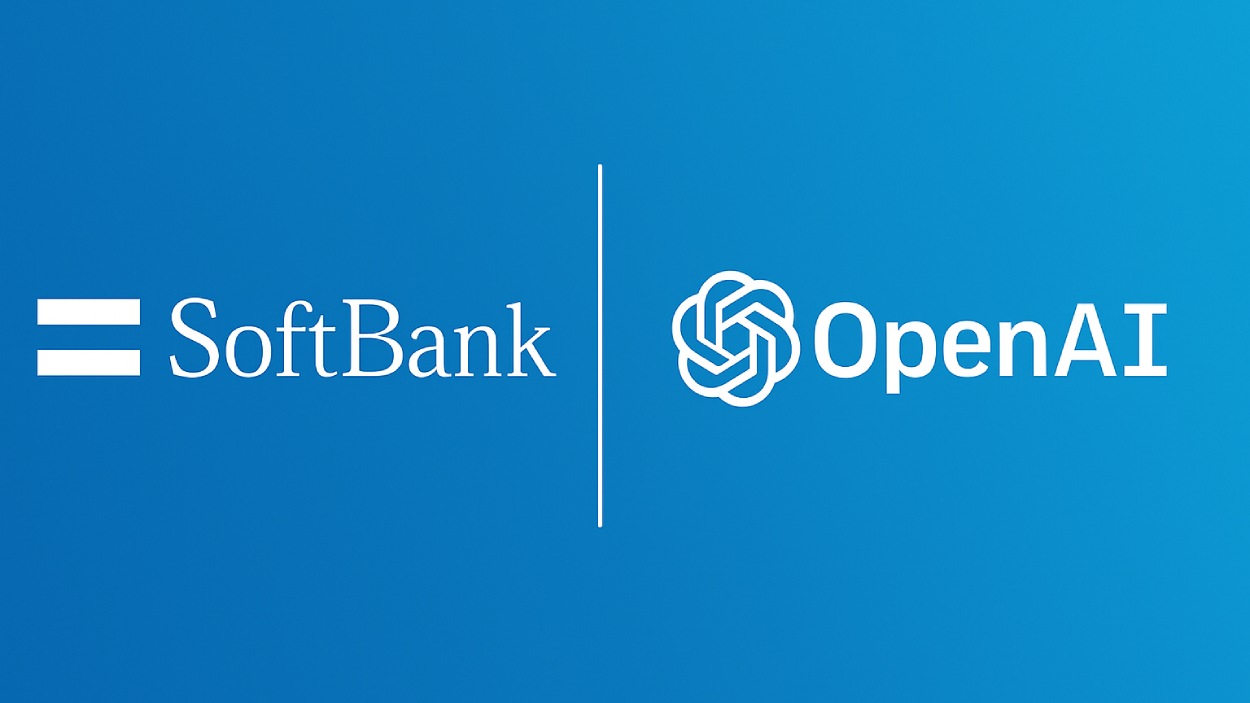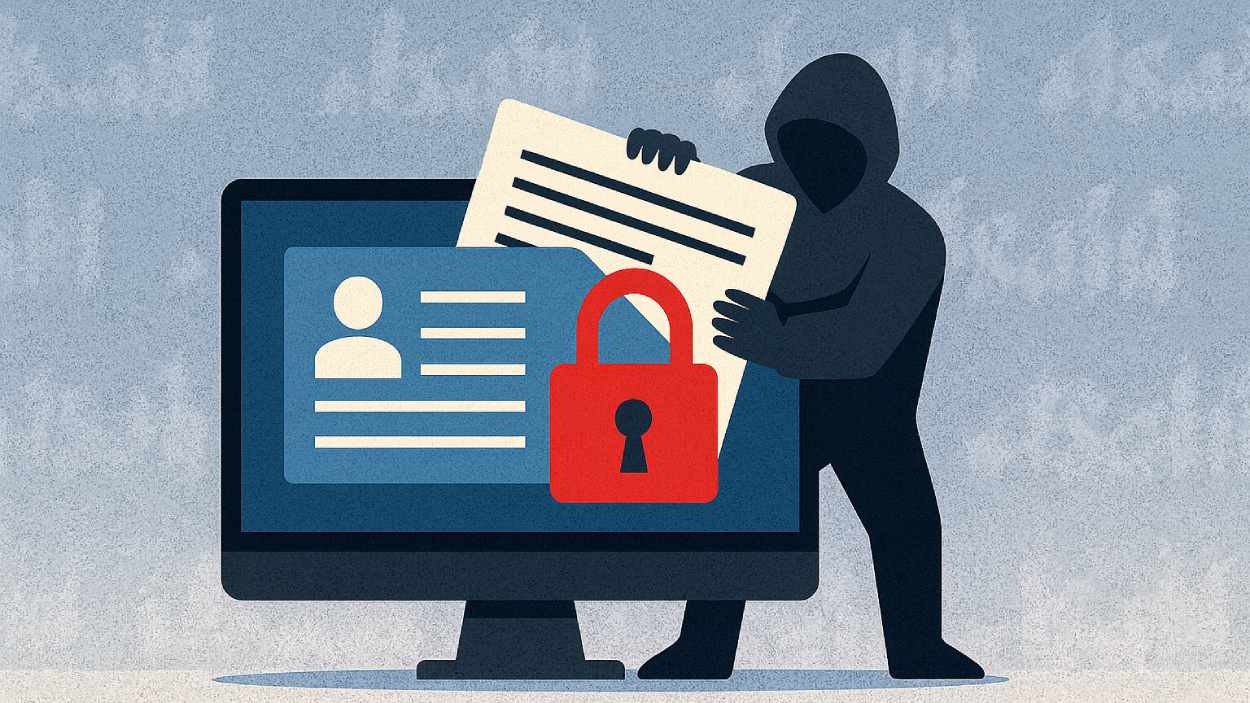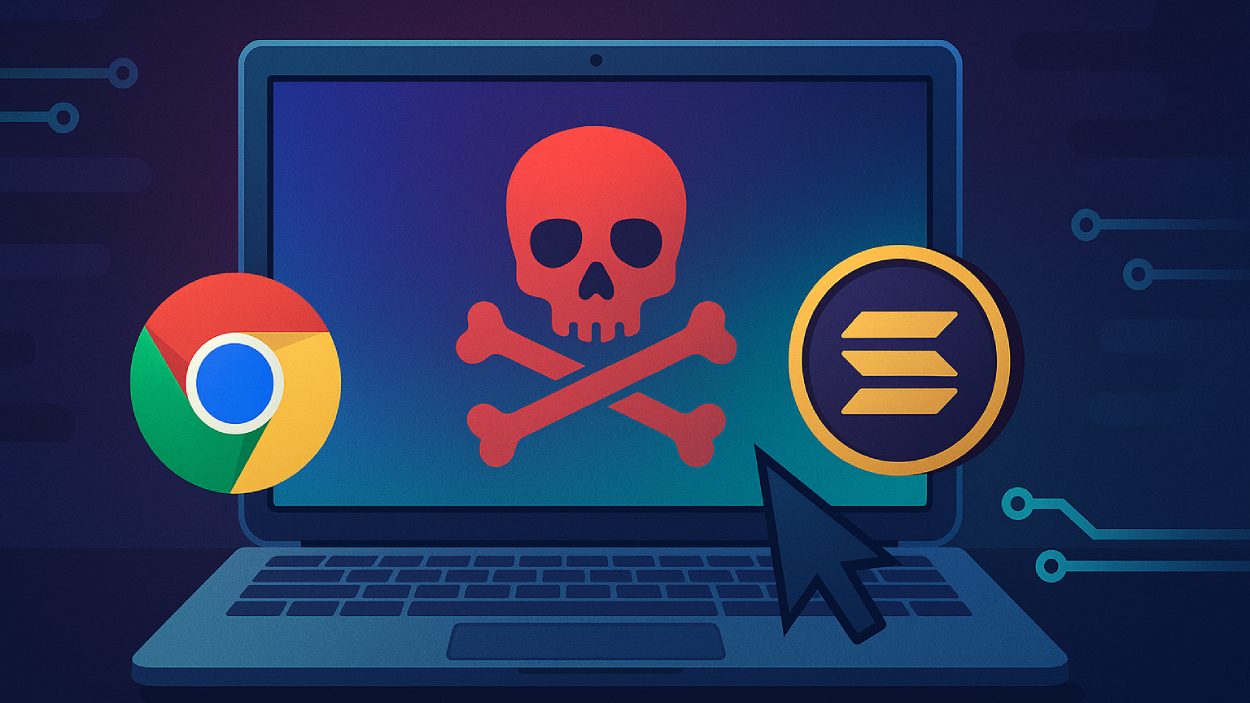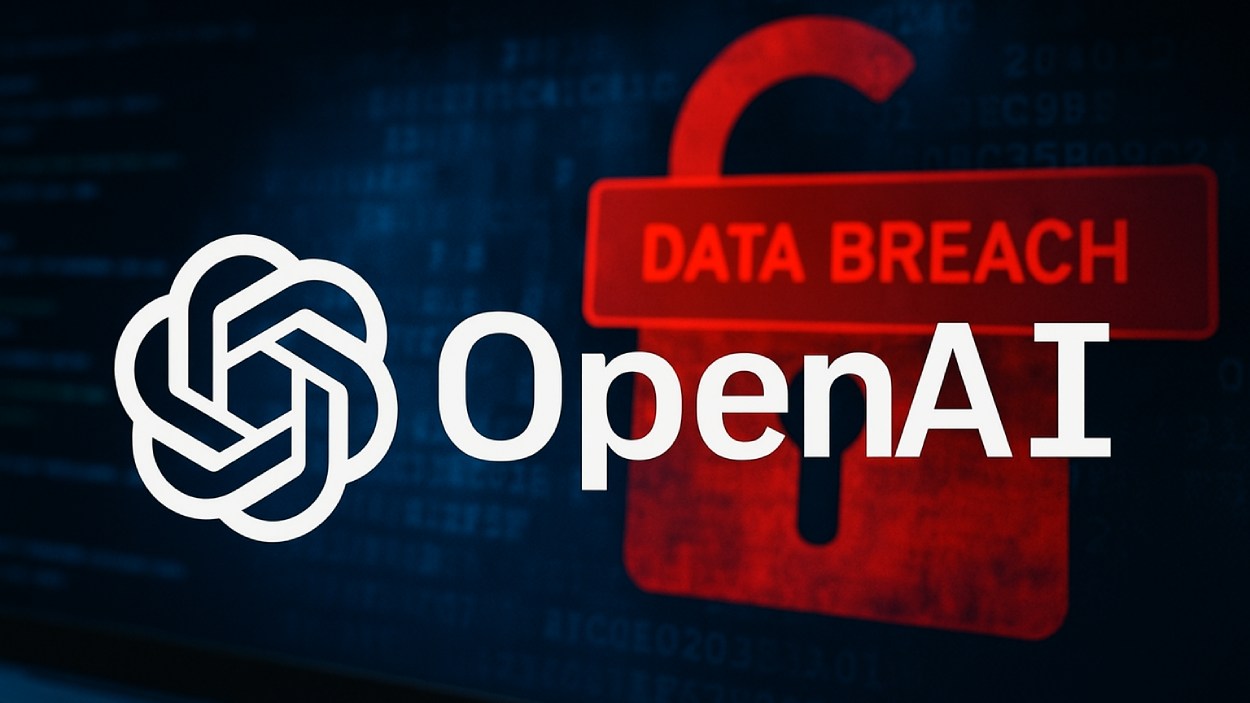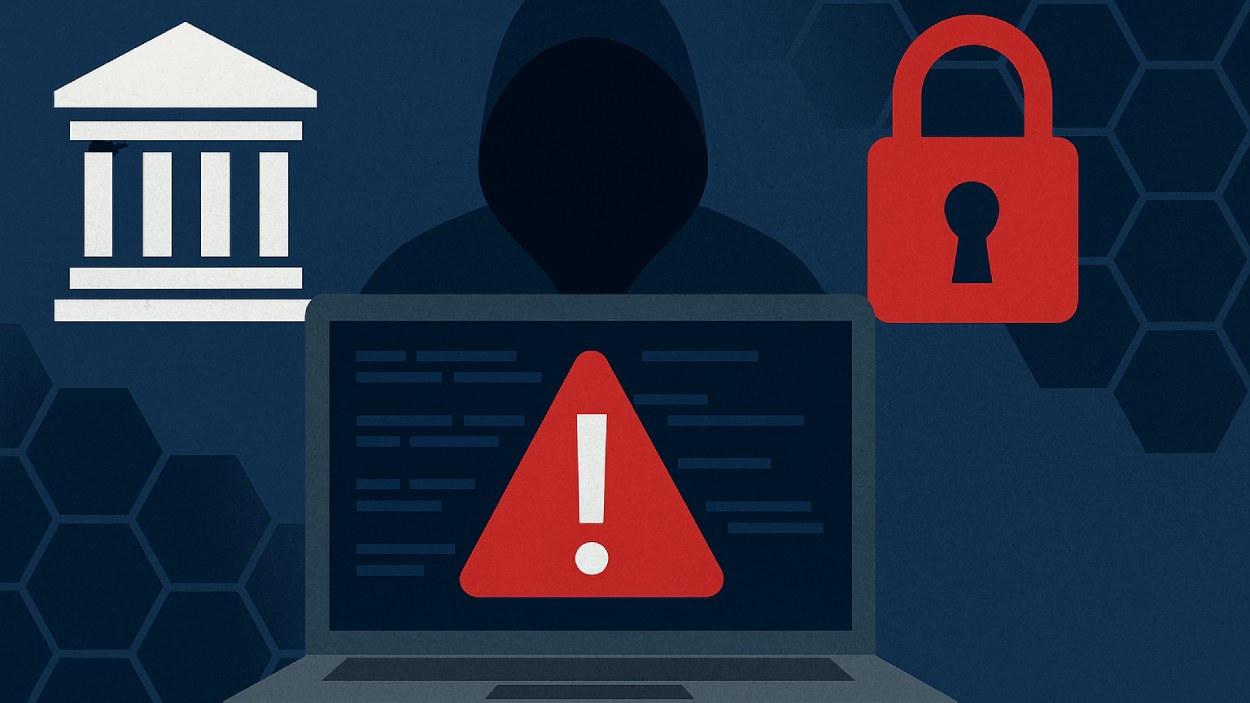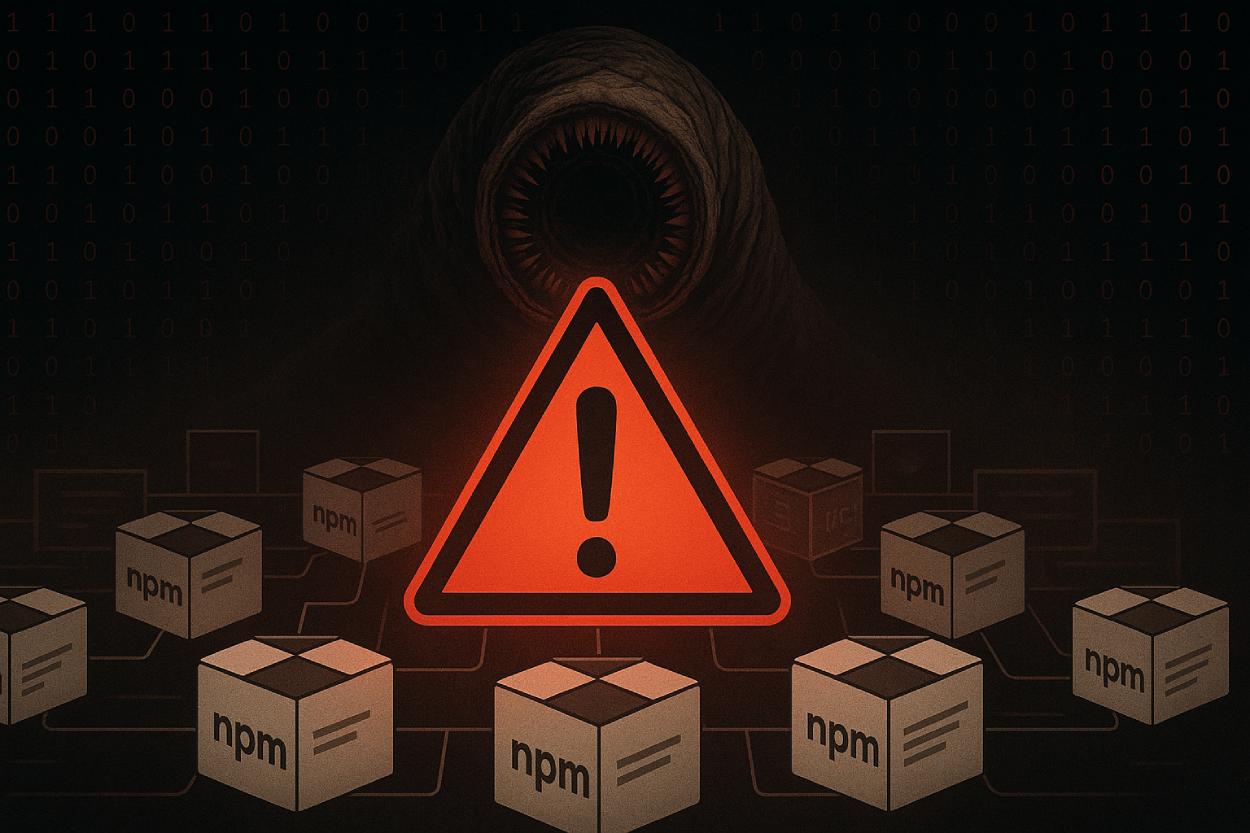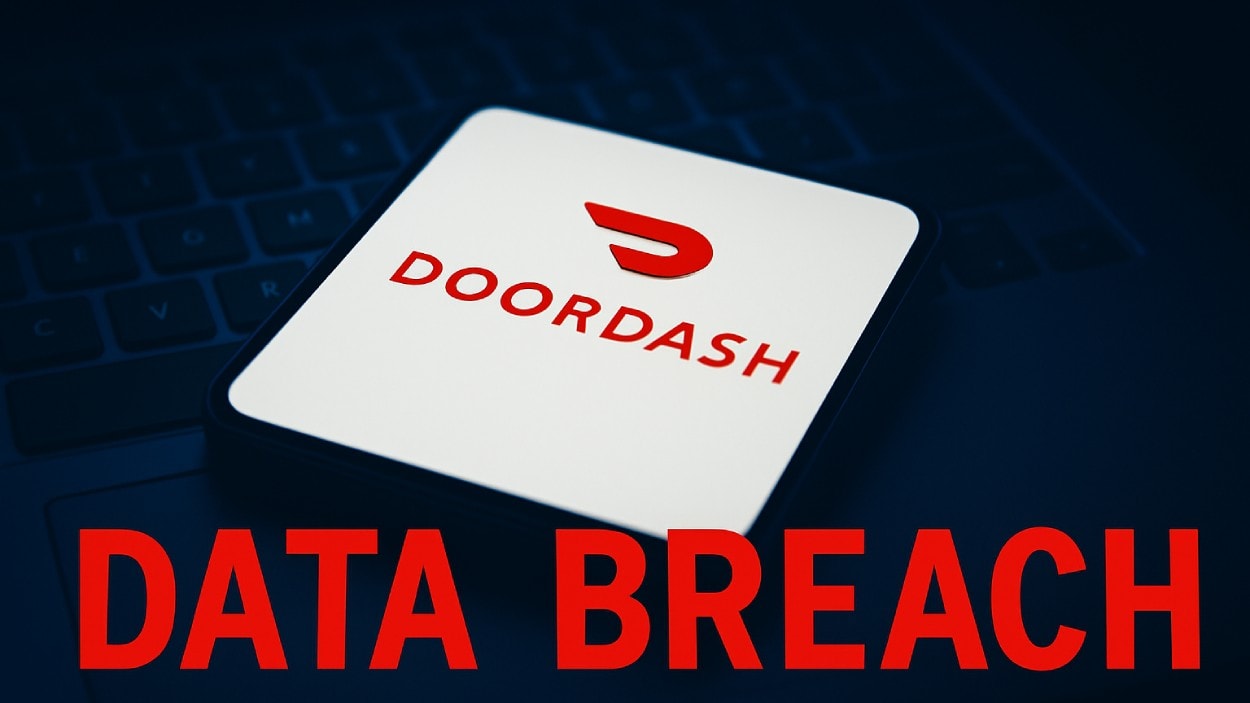It started with a scroll. A young teen flicked through endless images of idealized bodies, perfectly lit meals, and transformation stories tagged with #thinspo. What began as casual entertainment slowly shaped her beliefs about food, beauty, and worth. By the time her parents noticed, dinner had become a battle, and her self-esteem, a casualty of curated feeds.
This isn’t just one story. In 2025, it’s become an epidemic. Social media has fundamentally altered how people, especially youth, see themselves and their bodies. This article unpacks the latest statistics that help us understand just how deeply this digital influence runs.
Editor’s Choice
- 65% of teens who use social media daily report experiencing negative feelings about their body image.
- 1 in 3 adolescents say they’ve engaged in disordered eating behaviors due to social media content.
- 80% of eating disorder patients say that social media contributed to the development or worsening of their condition.
- 71% of female users aged 14–24 follow at least one fitness or diet influencer, many of whom promote unrealistic body standards.
- Among daily social media users, 42% of males report increased body dissatisfaction due to appearance-based comparisons.
- 39% of users in ED recovery communities relapsed after exposure to triggering or glamorizing content online.
- TikTok content with the hashtag #WhatIEatInADay was viewed more than 19 billion times by early 2025, with a significant portion glamorizing restrictive eating.
Mental Health and Social Media: Exposure Among U.S. Girls
- 67% of girls reported receiving helpful mental health information in real life, but 45% also encountered harmful suicide/self-harm content, and 38% saw eating disorder-related content.
- TikTok showed a dual impact: 65% found helpful mental health content, while 43% were exposed to suicide/self-harm and another 43% to eating disorder content.
- On Instagram, 59% of girls accessed positive mental health resources, but 43% also encountered harmful suicide/self-harm messages, and 37% came across eating disorder content.
- YouTube provided helpful content to 58%, but 33% saw suicide/self-harm content, and 32% saw eating disorder content at least monthly.
- On Snapchat, 54% reported helpful exposure, while 35% experienced suicidal/self-harm messaging, and 32% saw eating disorder-related material.
- Messaging apps had the lowest rate of helpful exposure at 43%, with 33% reporting exposure to self-harm content and 30% to eating disorder messaging.
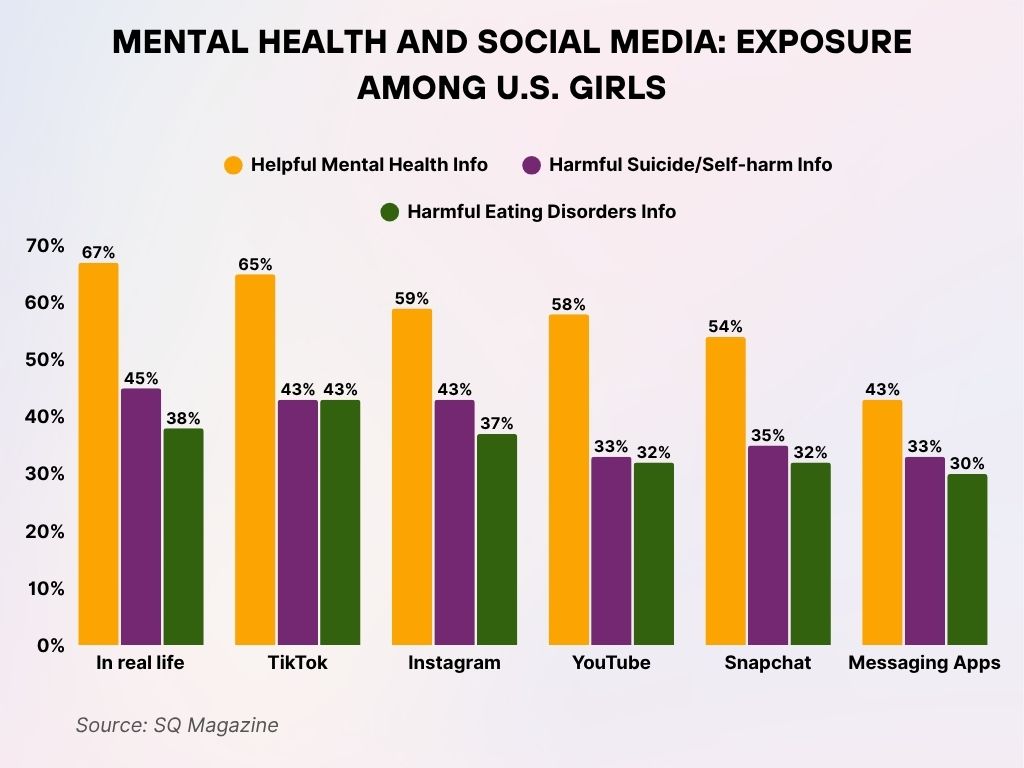
Prevalence of Eating Disorders Among Social Media Users
- In 2025, an estimated 24% of high school students who use social media daily exhibit symptoms consistent with eating disorders.
- 18% of college students using image-based platforms like Instagram report a diagnosed eating disorder.
- 56% of users who follow weight loss accounts say they’ve attempted unhealthy diets or fasting as a result.
- 2 in 5 LGBTQ+ youth on social media report disordered eating patterns linked to appearance-based comparison.
- 35% of young adults (18–25) say they have skipped meals or purged to look better in photos or videos.
- 7.9% of users on ED-specific subreddits self-report binge-purge cycles at least weekly.
- In 2025, over 5 million Americans attribute the onset of their eating disorder to consistent exposure to social media content.
- 50% of users who consume “fitness transformation” content admit to experiencing guilt or shame related to their own body image.
- 29% of daily TikTok users report intrusive thoughts about food and weight after viewing content on the platform.
Impact of Social Media Platforms on Body Image
- 67% of female teens say social media makes them feel worse about their appearance.
- 43% of males aged 16–22 experience heightened body comparison due to influencer or peer content.
- Among adults aged 18–30, 59% feel that social media has negatively impacted their self-perception.
- 74% of users following fitness or beauty influencers report dissatisfaction with their own body.
- 32% of users admit to using image filters specifically to alter perceived body size or shape.
- 41% of teen girls report deleting photos that don’t meet appearance standards based on influencer norms.
- Platforms like Instagram and TikTok rank highest in body dissatisfaction reports, cited by 62% of users with ED symptoms.
- 28% of users have considered cosmetic surgery after repeated exposure to idealized body types on social media.
- 46% of Gen Z women say they avoid posting selfies due to fear of appearance-based judgment or shaming.
- 33% of users believe they would have a more positive body image if they had never used social media.
Gender Disparity in Anorexia Nervosa Prevalence
- 0.16% of females are affected by anorexia nervosa, making it nearly twice as prevalent as in males.
- Only 0.09% of males report experiencing anorexia nervosa, indicating a significantly lower rate compared to females.
- The data highlights a notable gender gap in the occurrence of this eating disorder.
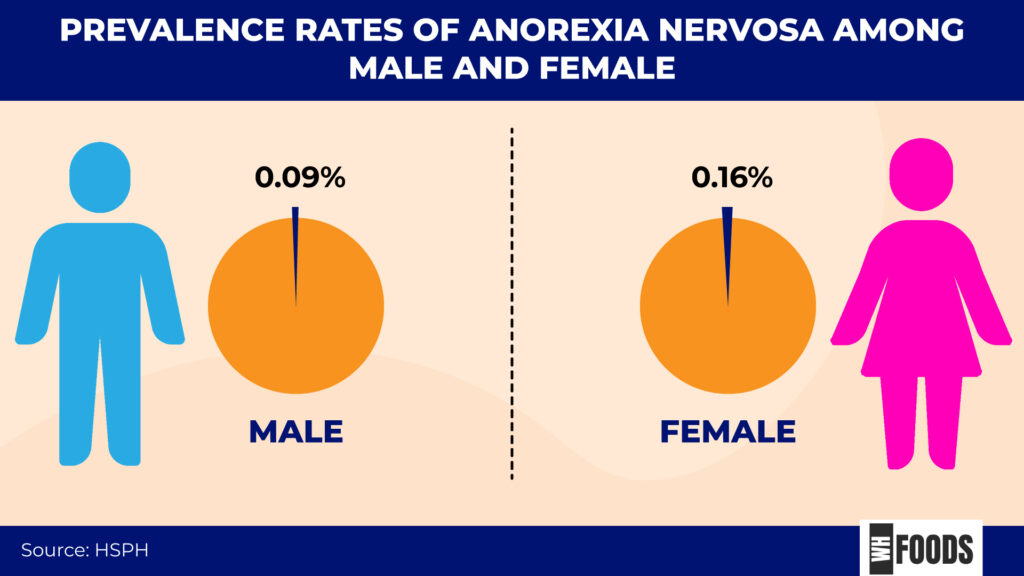
Role of Influencer Culture and Comparison Triggers
- 64% of teen users follow at least one “body transformation” influencer.
- 49% of young adults say influencer posts about food, fitness, and beauty have triggered restrictive eating.
- 70% of users with a diagnosed eating disorder say influencer culture worsened their symptoms.
- 27% of followers of “thinspiration” or “fitspiration” accounts engage in daily comparison-based thinking.
- 55% of young women say they compare themselves to influencers more than they do to real-life peers.
- 3 in 5 users who follow influencers promoting diet supplements report having tried them unsupervised.
- 38% of college-age users admit to feeling envious or inadequate after viewing influencer content.
- 44% of daily Instagram users say influencer content made them feel ashamed of their natural body.
- 26% of males aged 15–25 follow fitness influencers and report body dissatisfaction as a result.
- 21% of users who frequently engage with influencer content say they feel compelled to alter their eating habits.
Time Spent on Social Media and Disordered Eating Behaviors
- 72% of teens who spend more than 3 hours a day on social media show increased risk for disordered eating behaviors.
- Daily users averaging 4–6 hours on platforms are 2.4 times more likely to engage in restrictive dieting than those under 1 hour.
- 37% of users who engage in late-night scrolling report increased binge-eating episodes linked to negative emotional states.
- Among adolescents with high screen time, 48% report body dissatisfaction that directly influenced their eating patterns.
- Users who check social media more than 10 times a day are 3 times more likely to experience food guilt and calorie obsession.
- 31% of college students admit to skipping meals while scrolling to maintain a “fasted” state influenced by social trends.
- 45% of TikTok users who consume food-related content for over 2 hours daily reported worsening of body image perception.
- 59% of individuals who track body changes online say social media reinforced obsessive behaviors around food and fitness.
- 21% of users with more than 5 hours daily screen time say they avoid eating in front of others due to social media anxiety.
- In 2025, 15% of high schoolers admit to adjusting their meals specifically to match trends like “What I Eat in a Day” reels.
Common Symptoms Experienced by Individuals with Eating Disorders
- 81.8% of respondents reported experiencing low energy, making it the most common symptom.
- 78.2% mentioned depression as a significant psychological effect of their eating disorder.
- 74.5% struggled with anxiety, highlighting the strong mental health connection.
- 56.4% experienced excessive weight loss, a hallmark symptom of eating disorders.
- 50.9% faced hormonal changes, indicating internal physiological disruptions.
- 47.3% reported hair loss, reflecting the impact of nutritional deficiencies on physical appearance.
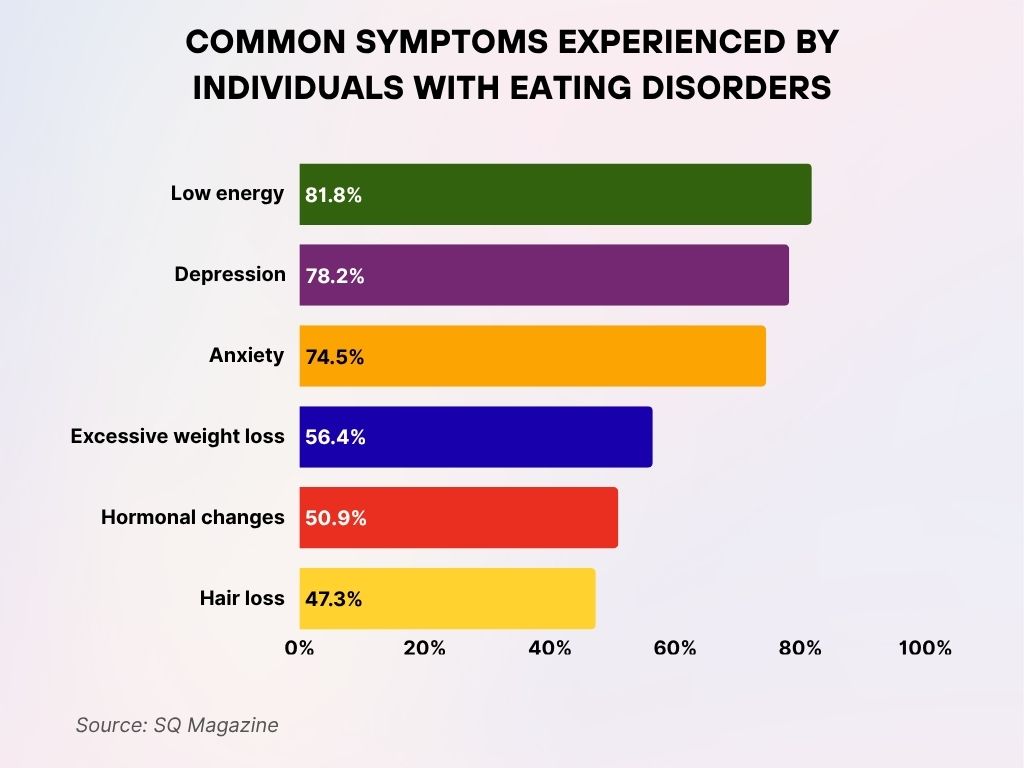
Content Types Linked to Eating Disorder Risks (e.g., Fitspiration, Diet Trends)
- #Thinspiration content was viewed over 5.4 billion times on TikTok in the first half of 2025, despite moderation efforts.
- 68% of users who follow Fitspiration content say it makes them feel they’re “never doing enough” with diet or exercise.
- 47% of teens report copying meal plans or diet trends shared by influencers without consulting professionals.
- The rise of “almond moms” and restrictive parenting accounts led 28% of Gen Z females to adopt low-calorie diet trends.
- 61% of users who follow intermittent fasting trends reported disordered eating patterns or obsessive tracking behavior.
- 14% of young males admit they engage in “bulk and cut” cycles influenced by online fitness trends, often without guidance.
- 31% of daily users say that “glow-up” reels contribute to body dissatisfaction and disordered habits.
- 22% of TikTok viewers said they felt compelled to skip meals after viewing weight-loss transformation videos.
- Videos tagged #bodycheck have increased by 112% in views since 2023, with many showing underweight bodies and measuring rituals.
- 35% of recovered users said exposure to diet trends triggered relapses or obsessive behavior even after long-term progress.
Algorithmic Amplification of Harmful Content
- 62% of users report that once they engage with one piece of diet content, their feed becomes saturated with similar or more extreme material.
- On TikTok, body-focused content is 3 times more likely to be pushed into For You pages than neutral lifestyle content.
- YouTube’s recommendation engine increased exposure to “What I Eat in a Day” and fasting videos by 41% in early 2025.
- 44% of young women report they’ve been algorithmically exposed to weight loss tips they did not search for.
- 53% of parents say they found pro-anorexia content on their child’s feed despite using restricted content settings.
- In 2025, AI-driven suggestion loops were flagged by researchers for promoting extreme diet culture to underage users.
- 39% of users exposed to ED content say it led them to other problematic behaviors like over-exercising or isolation.
- Meta’s platforms (Instagram and Facebook) show a higher engagement rate (avg. 7.2%) on body-centric posts than neutral content.
- Reports show ED-tagged videos are still reaching users via vague captions or intentionally misspelled hashtags (e.g., #an4rex1a).
- 26% of adolescents say they felt “trapped in a loop” of toxic content pushed by the algorithm, even after blocking keywords.
Mental Illness Diagnoses Rise with Social Media Use
- 66% of social media users were diagnosed with anxiety, compared to only 57% of non-users.
- Depression rates jumped to 70% among users, versus 46% among those who don’t use social media.
- Behavioral/Emotional disorders were reported by 24% of users, nearly triple the 9% found in non-users.
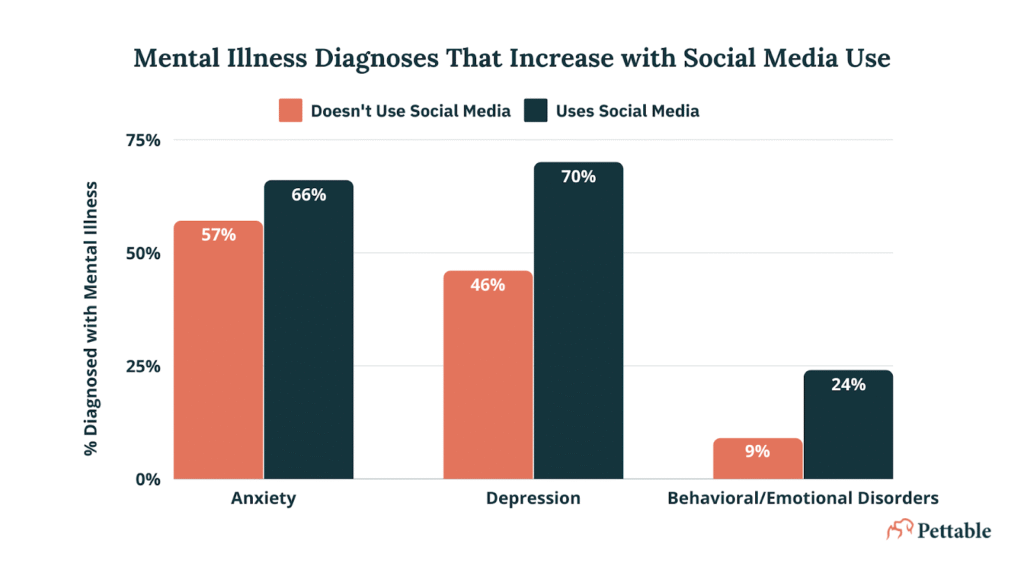
Psychological Effects of Social Media Filters and Editing Tools
- 67% of teen users have used face or body-altering filters before uploading a photo.
- 49% of females aged 14–20 report feeling that their unfiltered self is not “post-worthy.”
- 36% of users say that editing tools increase their anxiety around social settings and public appearances.
- 22% of males admit to using photo editing apps to make their bodies appear more muscular.
- 75% of Gen Z girls say filters make them feel pressure to alter their real-life appearance with makeup or cosmetic procedures.
- The average age of first filter use is now 11.8 years among smartphone users in the U.S.
- 42% of users who frequently use filters say they feel detached from their real appearance in the mirror.
- Among users recovering from eating disorders, 58% report that face-tuning apps acted as relapse triggers.
- 81% of TikTok users under age 18 have used a beauty filter, many designed to slim the face or enlarge eyes and lips.
- Research in early 2025 found a 21% increase in body dissatisfaction after just 10 minutes of filter-based app usage.
Role of TikTok, Instagram, and Emerging Platforms in ED Trends
- TikTok remains the platform with the highest body-image-related engagement, with 74% of users under 21 reporting exposure to weight-related content weekly.
- In 2025, Instagram’s Explore tab was cited by 49% of female users as a source of body dissatisfaction.
- 42% of TikTok users aged 13–17 say they’ve encountered ED-promoting content within their first month of usage.
- Threads and Lemon8, newer emerging platforms, have seen a 22% increase in posts tagged with restrictive eating trends.
- Among active social media users with ED history, 61% cite TikTok as the platform most associated with their triggers.
- Instagram’s algorithm led 34% of users to pro-diet content despite not interacting with such material.
- 15% of Snapchat users aged 12–16 report exposure to body-altering filters linked with negative body perception.
- BeReal, while marketed as authentic, has unintentionally led to 28% of teens feeling anxious about their unfiltered appearance.
- Over 9 billion views were recorded under the hashtag #bodygoals on TikTok in early 2025 alone.
- 20% of users on Threads said that minimalist diet and “clean girl aesthetic” content made them rethink their normal eating habits.
Most Common Forms of Mental Illness by Prevalence
- Anxiety Disorder is the most widespread, affecting 19.1% of individuals.
- Major Depression ranks second, with a prevalence rate of 8.3%.
- Post-Traumatic Stress Disorder (PTSD) impacts 3.6% of the population.
- Bipolar Disorder is reported by 2.8% of individuals.
- Borderline Personality Disorder (BPD) affects 1.4% of people.
- Eating Disorders and Obsessive-Compulsive Disorder (OCD) each impact 1.2% of the population.
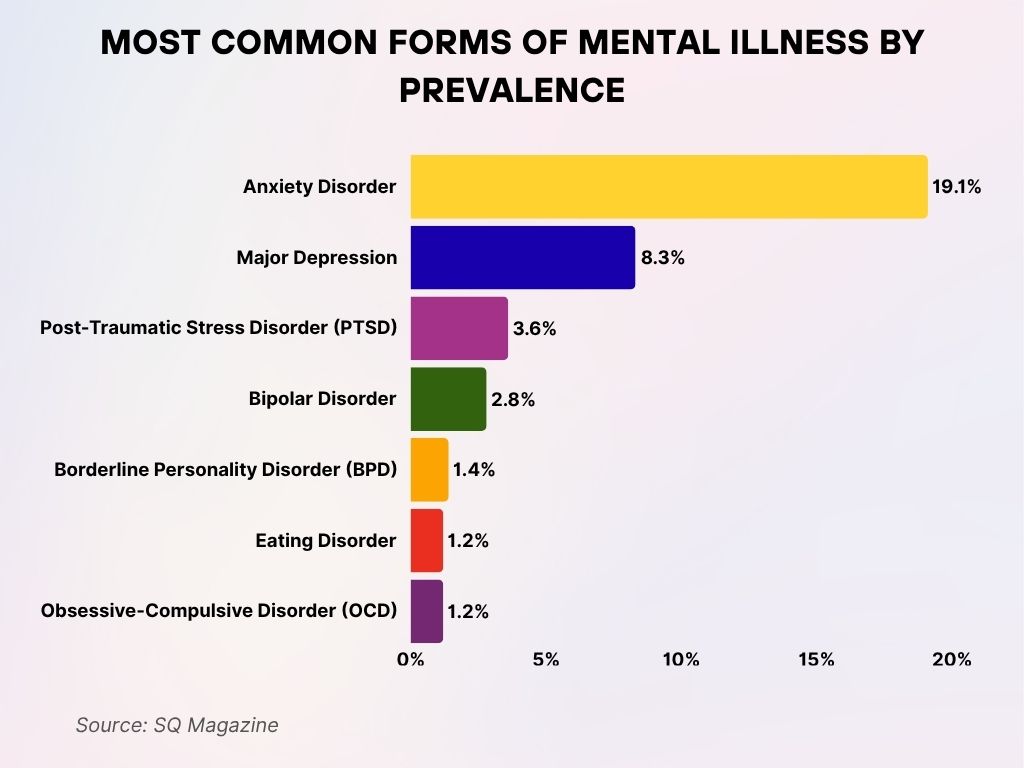
Recovery and Relapse Influenced by Online Communities
- 38% of recovered ED users say online recovery communities helped them maintain healthy behaviors.
- Reddit communities such as r/EatingDisorders and r/EDRecovery saw a 19% increase in posts offering peer-based support in 2025.
- 24% of users in ED recovery said exposure to relapsing peers on forums triggered setbacks.
- Among ED support group members, 57% credit digital accountability posts with sustaining positive eating habits.
- TikTok creators sharing recovery journeys generated 2.3 billion views, showing a significant appetite for pro-recovery narratives.
- 43% of young adults say they prefer anonymous online spaces to in-person support groups for ED recovery.
- 32% of relapsed users report they returned to disordered habits after consuming content glamorizing thinness or fasting.
- Discord servers dedicated to recovery saw a 12% increase in memberships in Q1 of 2025.
- 66% of users following recovery hashtags said it helped normalize body diversity and challenge beauty standards.
- 17% of users in recovery-focused communities said they relapsed due to accidental exposure to pro-ED content via algorithms.
Preventive Measures and Awareness Campaigns on Social Platforms
- TikTok rolled out a new policy in 2025 that automatically flags and blurs videos with suspected body-checking behavior.
- Instagram’s ED resource center has reached over 11 million users since January 2025.
- Meta’s ad targeting rules now block over 900 terms related to weight loss from being used to target teens.
- YouTube introduced a “balanced content badge” in February 2025 to reward creators who share health-forward, non-triggering posts.
- Snapchat’s Body Kind campaign had over 14 million engagements, focused on promoting self-acceptance and body neutrality.
- Pinterest, which banned weight loss ads in 2021, reported a 76% reduction in complaints about triggering imagery by 2025.
- 35% of users exposed to ED-awareness campaigns say it helped them reframe their relationship with food.
- TikTok’s in-app prompts for ED support helplines were triggered 8.6 million times in the first half of 2025.
- 45% of teens surveyed say they’d seen at least one influencer discussing body positivity or ED prevention in the past 3 months.
- Platforms that implemented anti-diet content filters saw a 29% decrease in ED-related keyword searches among teens.
Top Social Media Factors Contributing to Eating Disorders
- 56% of people believe trying to fit in with peers is the top reason social media contributes to eating disorders (58% of women vs. 53% of men).
- 50% cite celebrity and influencer endorsements of diet products as a major trigger (equal for both men and women).
- 47% say cyberbullying is a contributing factor (50% of women, 43% of men).
- 40% are concerned about the use of filters, with 44% of women and 35% of men agreeing.
- 38% mention dieting and weight loss posts as harmful, nearly equal between genders.
- 32% of respondents are affected by pro-eating disorder content like “pro-ana” or “thinspo”.
- Only 8% of total respondents said “none of the above”, suggesting a widespread belief in social media’s impact on disordered eating.
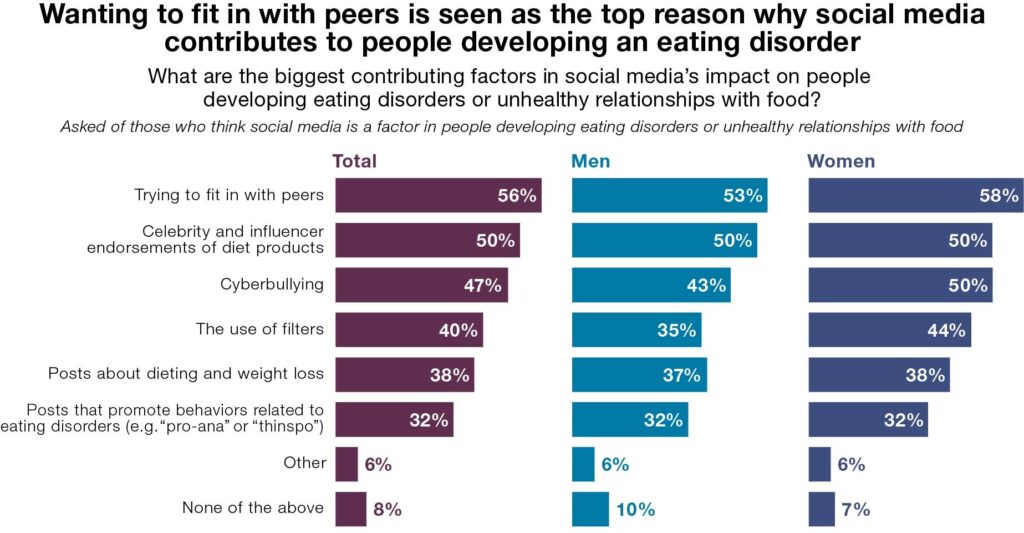
Recent Developments in Research and Platform Policies
- A 2025 study by the American Psychological Association found a 1.7x greater likelihood of ED symptom development among youth heavily exposed to aesthetic-focused content.
- Researchers found that algorithms using engagement-based prioritization increased user exposure to harmful body image content by 68%.
- A joint CDC–NIH report in Q2 of 2025 revealed that ED hospitalization rates among teen girls rose by 9% from the previous year, with social media cited in 61% of patient histories.
- TikTok and Instagram agreed to third-party audits of their content moderation systems beginning mid-2025.
- AI detection tools were implemented to identify risky hashtags, reducing exposure by 33% for minors.
- Congressional hearings in April 2025 highlighted platform responsibility, leading to bipartisan calls for a “Digital Mental Health Bill of Rights.”
- Meta’s transparency report revealed that 34 million pieces of content were removed for violating health misinformation or ED-related policies.
- 70% of parents support legislation to restrict algorithmic profiling for underage users based on appearance-related behavior.
- Researchers are piloting an app-integrated intervention that offers just-in-time nudges when users engage with high-risk ED content.
- Public health experts emphasize combining platform reform with education, noting that systemic changes alone won’t reduce harm.
Conclusion
The data from 2025 paints a sobering picture: social media continues to play a powerful, and at times dangerous, role in shaping eating behaviors, body image, and mental health, especially among teens and young adults. While awareness has grown and some platforms have responded with proactive measures, the burden still largely falls on users to filter what they see, how they interpret it, and how it affects their sense of self.
The intersection of social media and eating disorders is no longer theoretical; it’s statistical, psychological, and deeply personal. As policymakers, parents, educators, and tech companies confront this crisis, one thing remains clear: we must build digital spaces that nourish the mind, not erode it.

